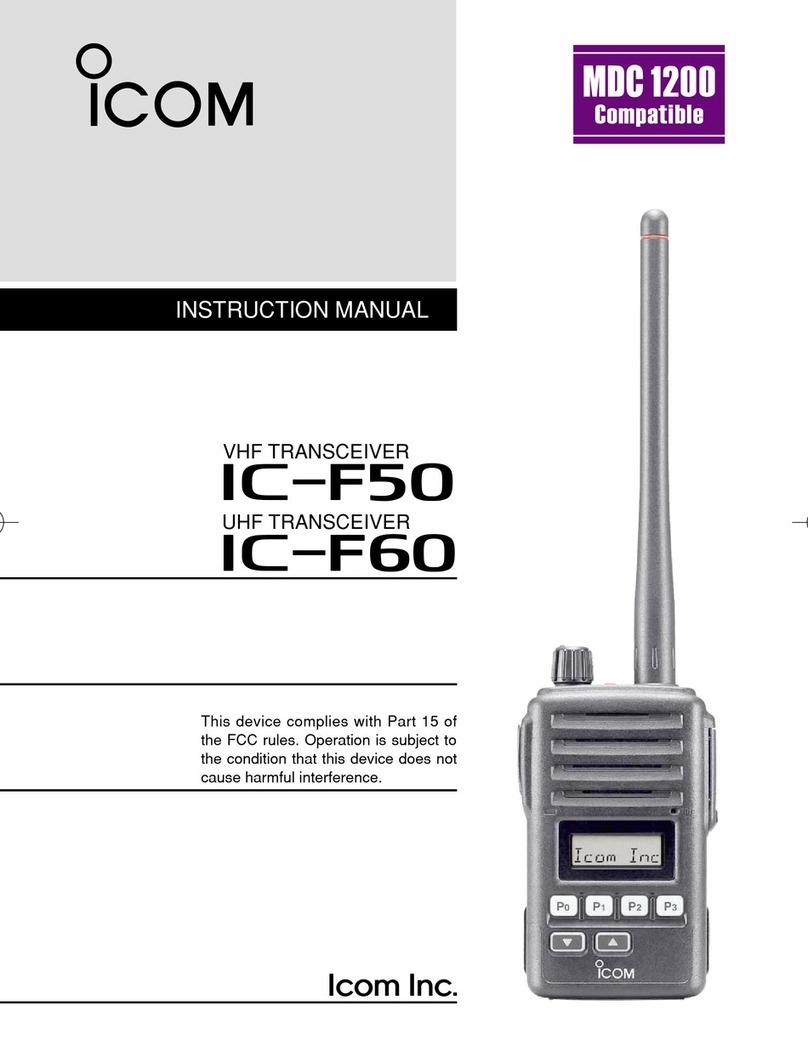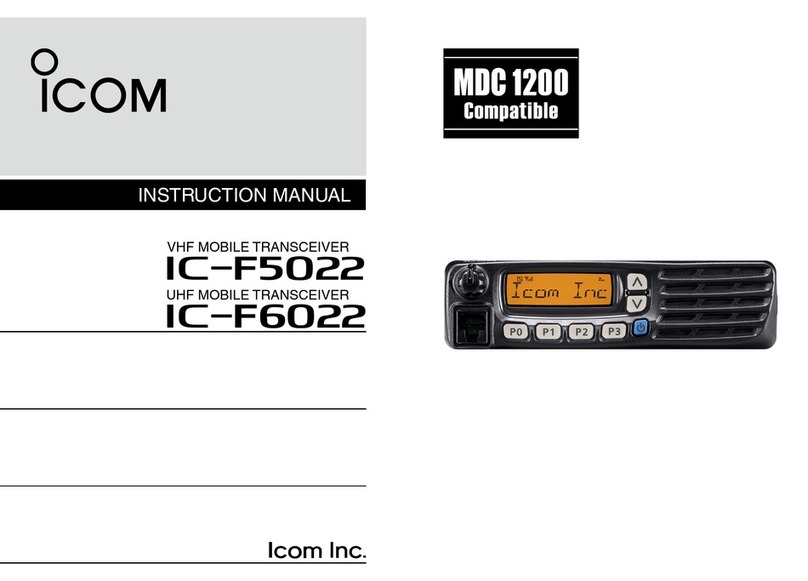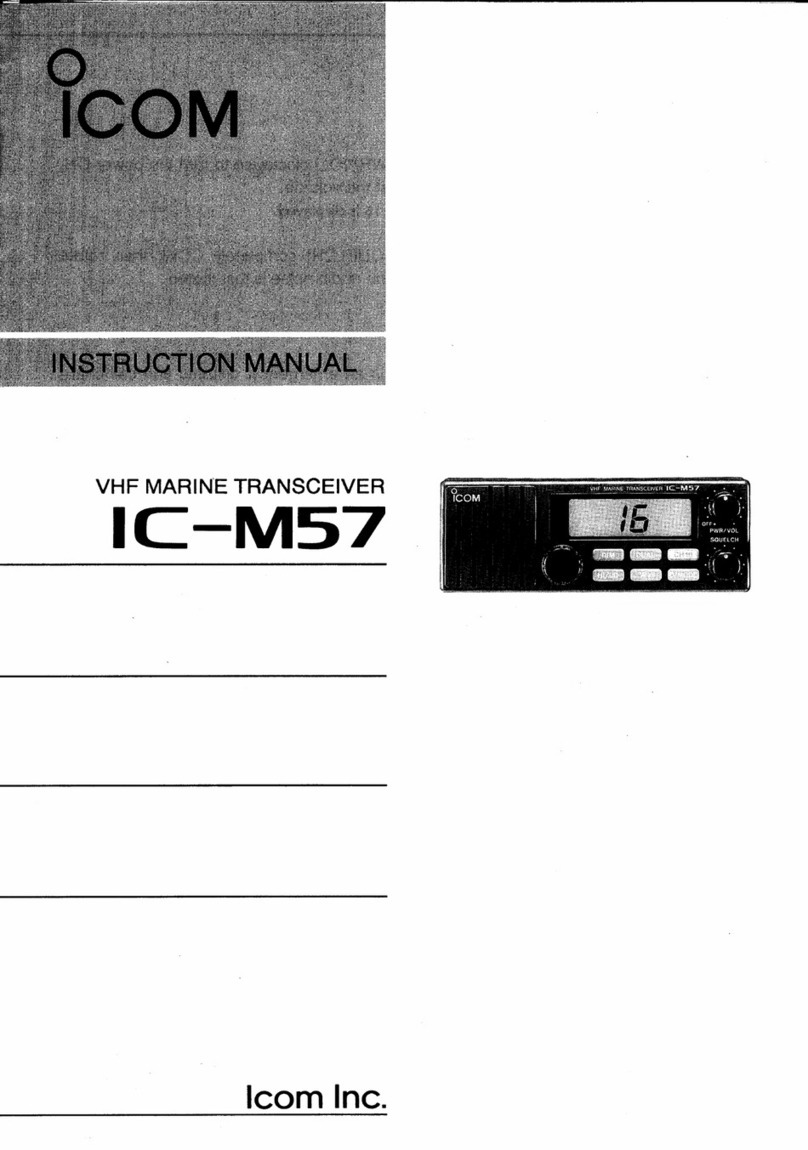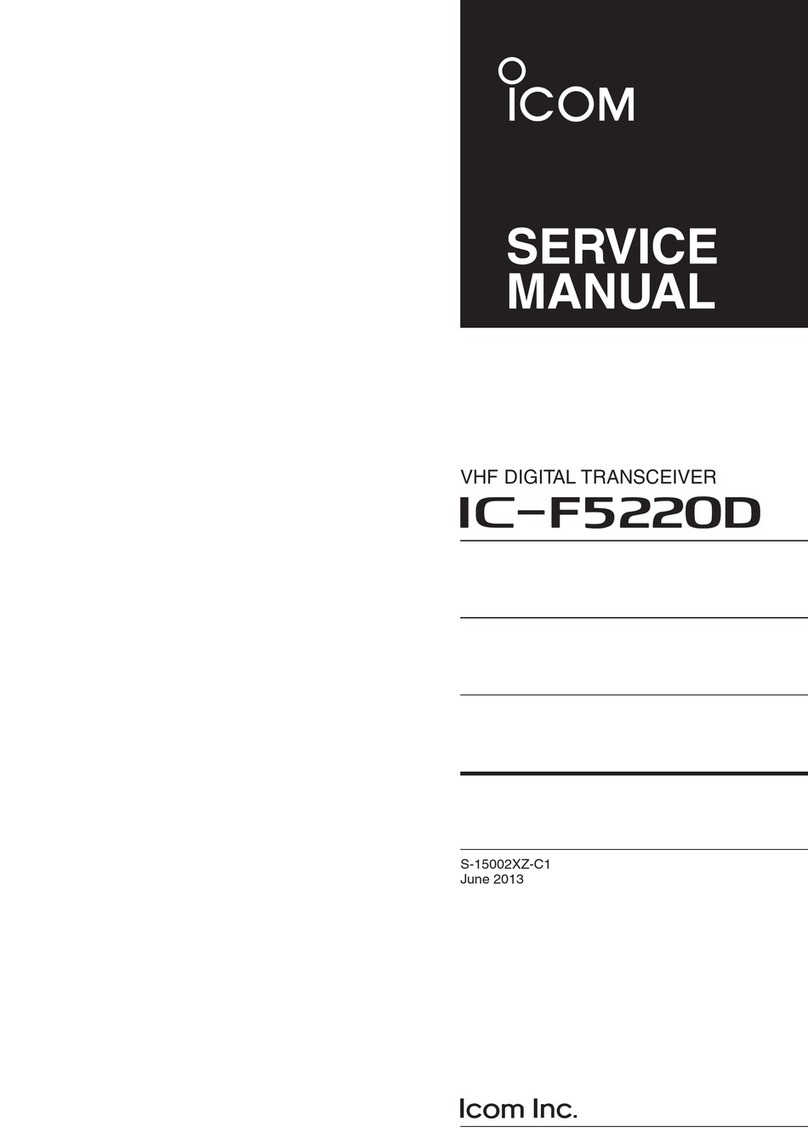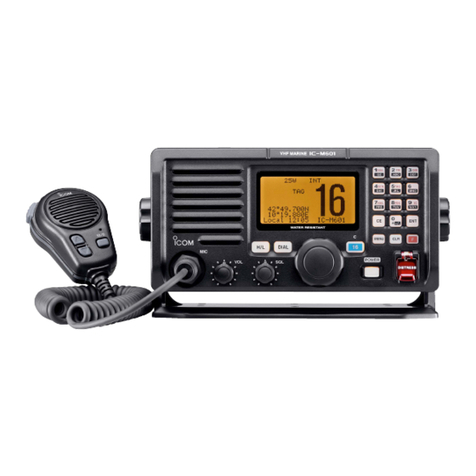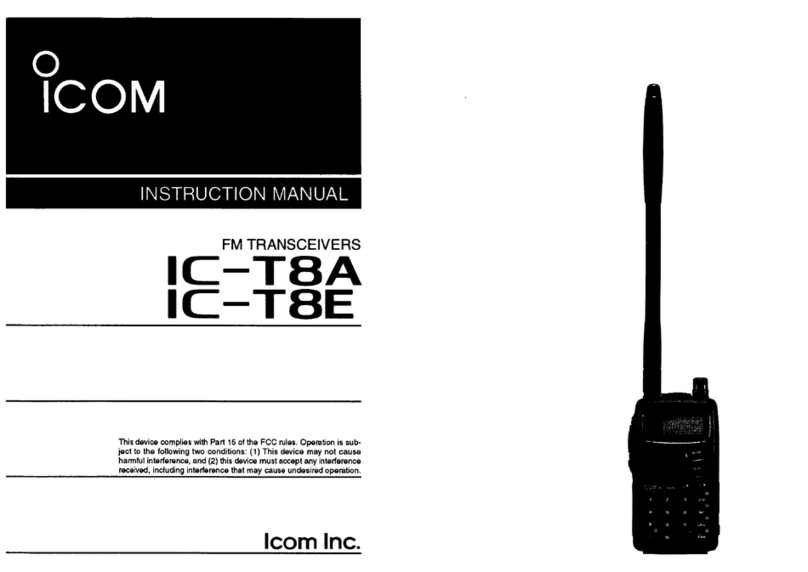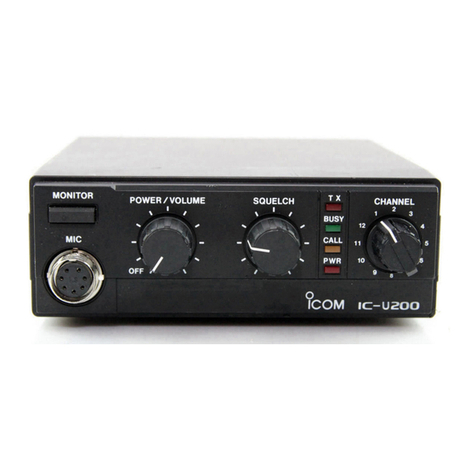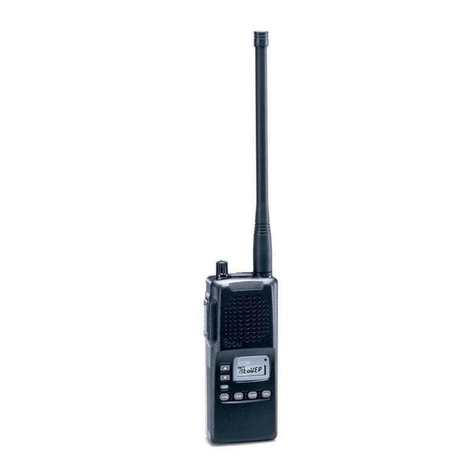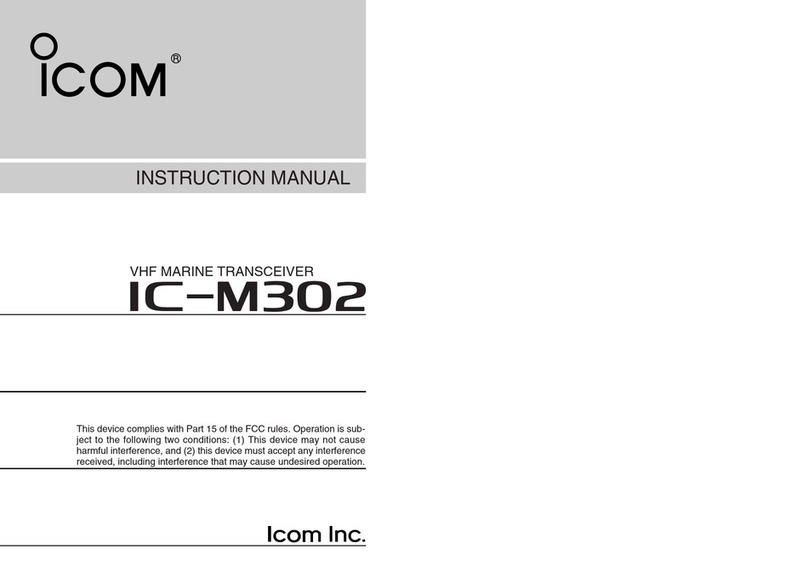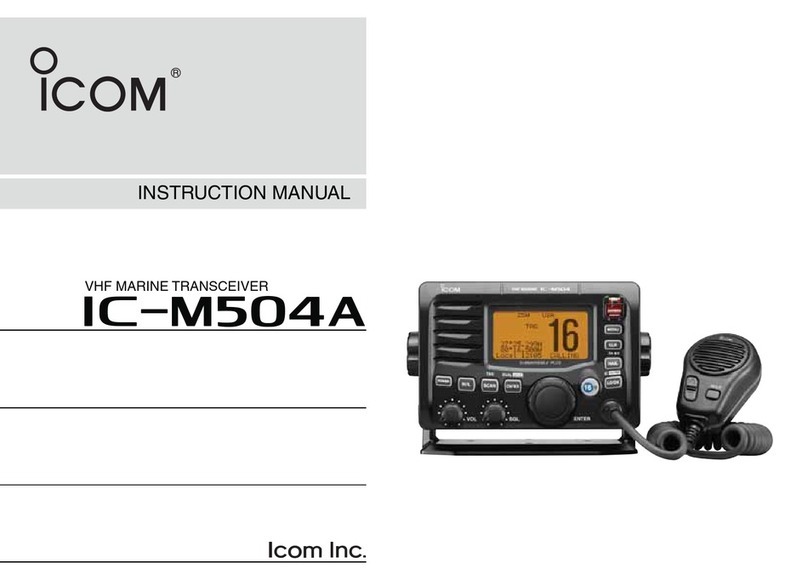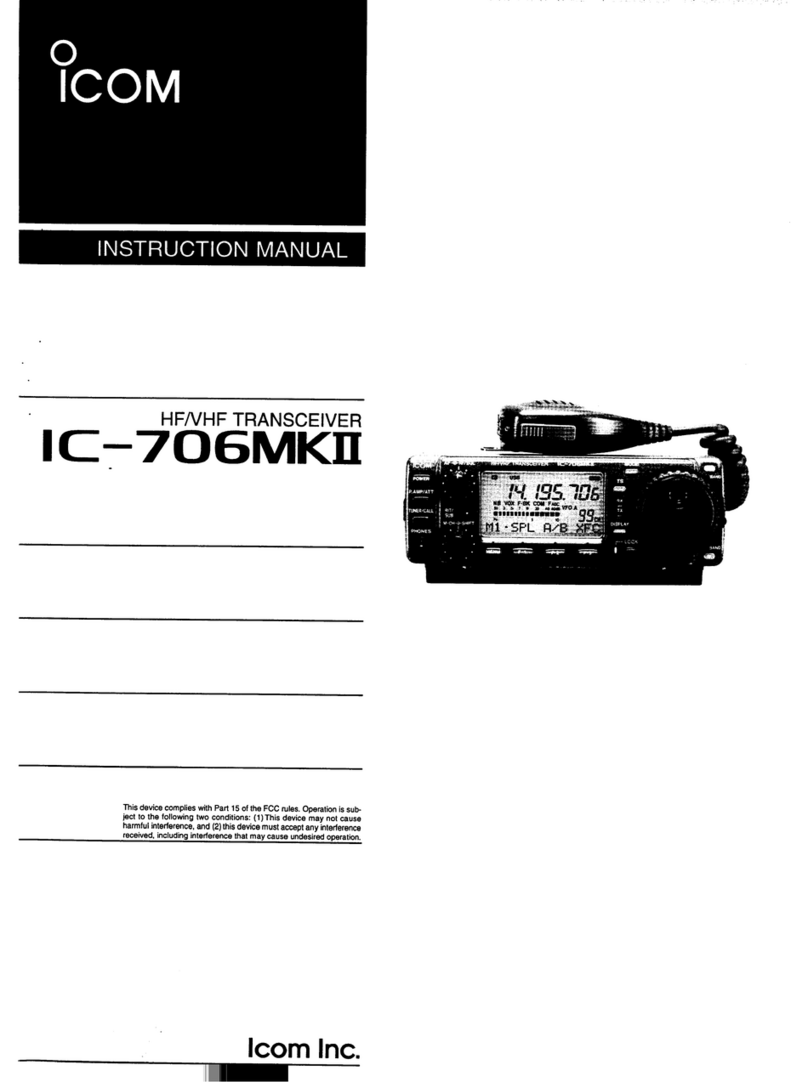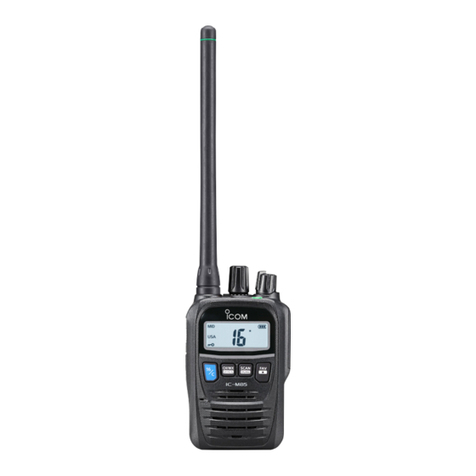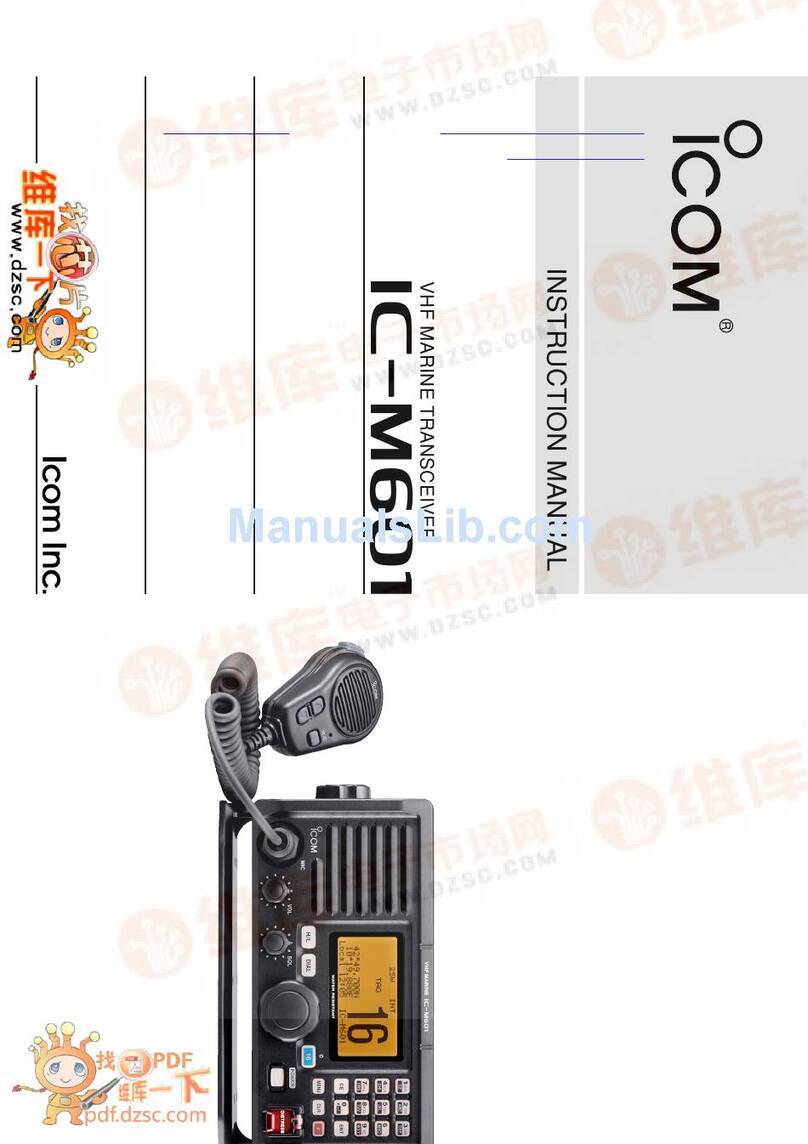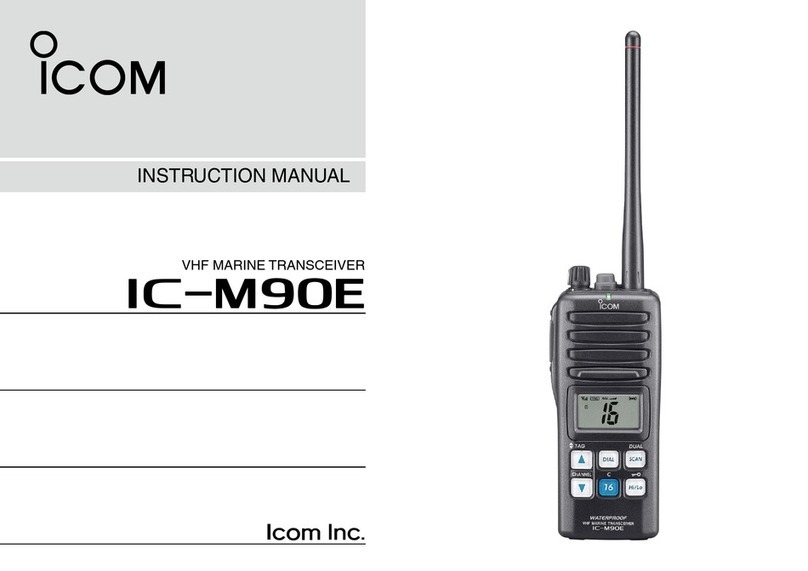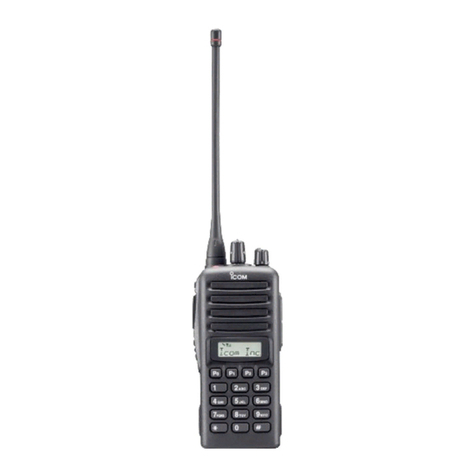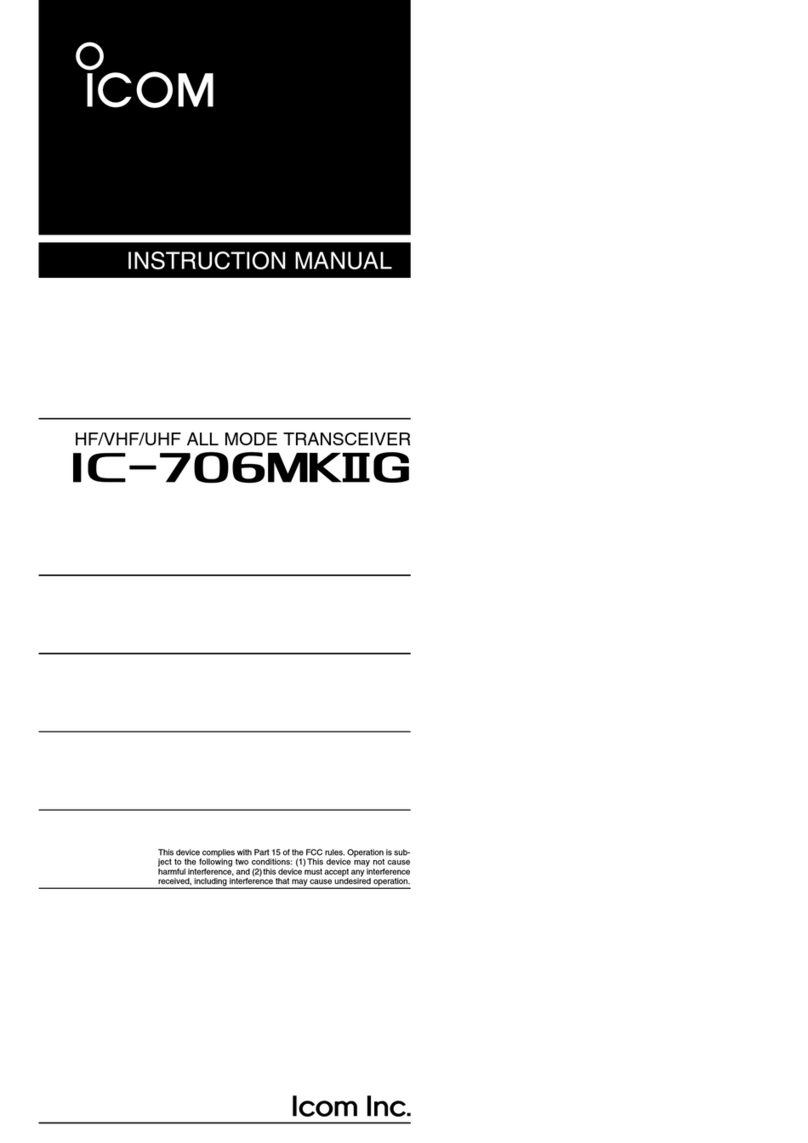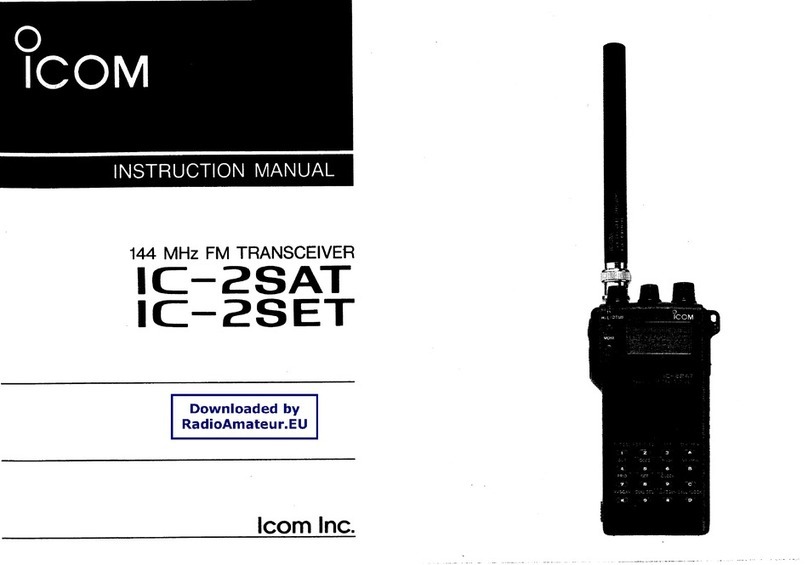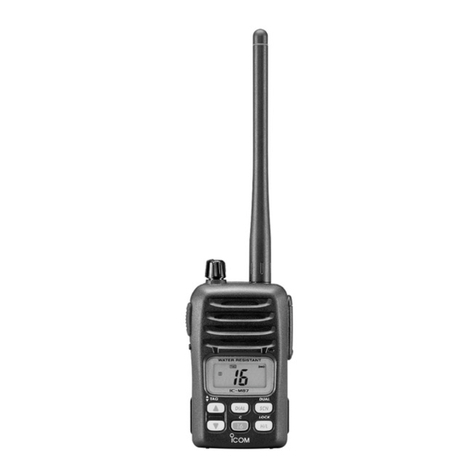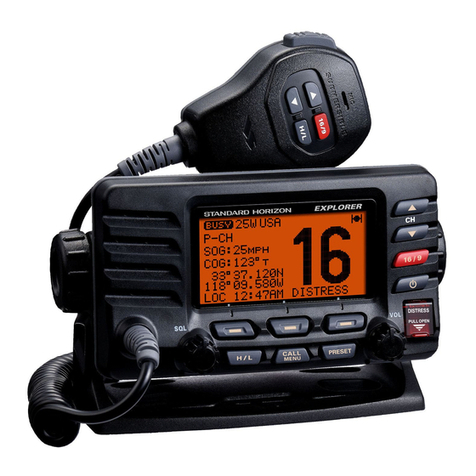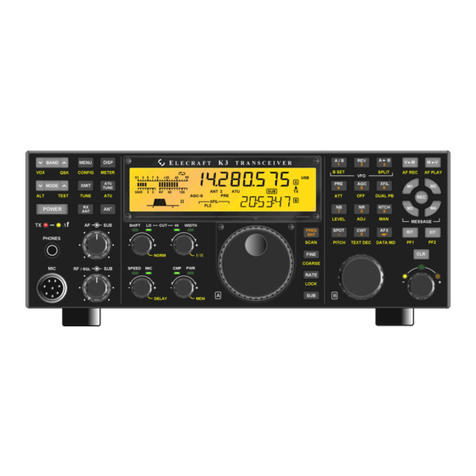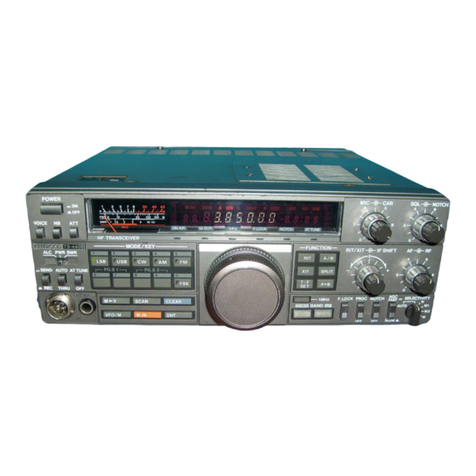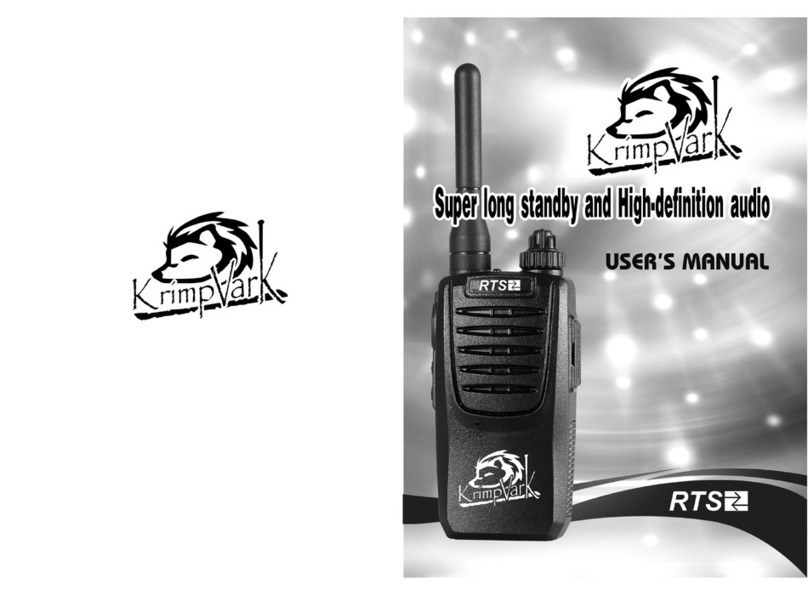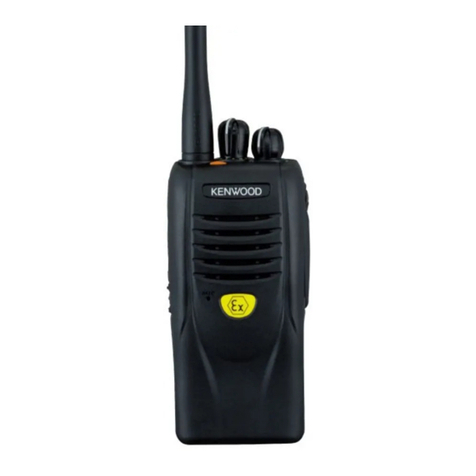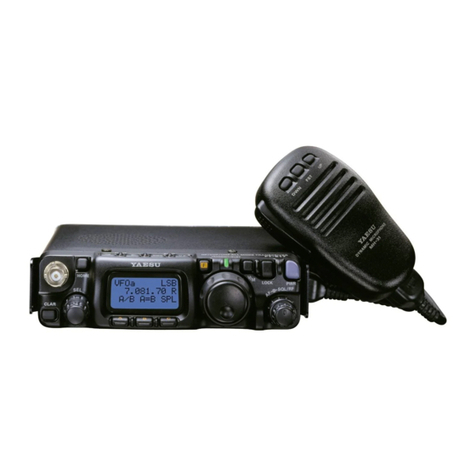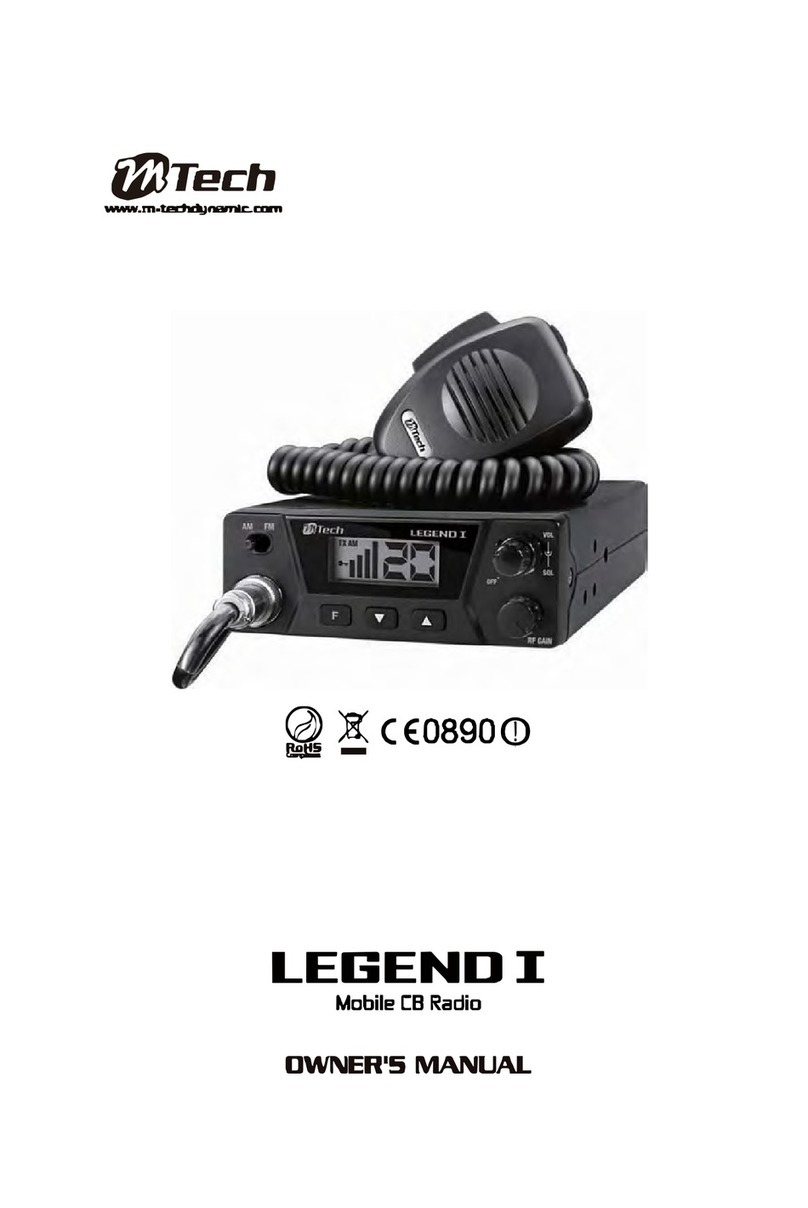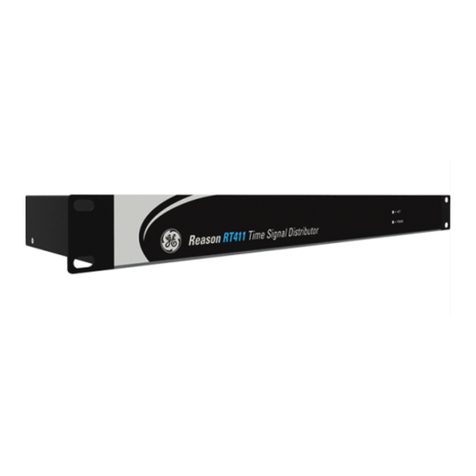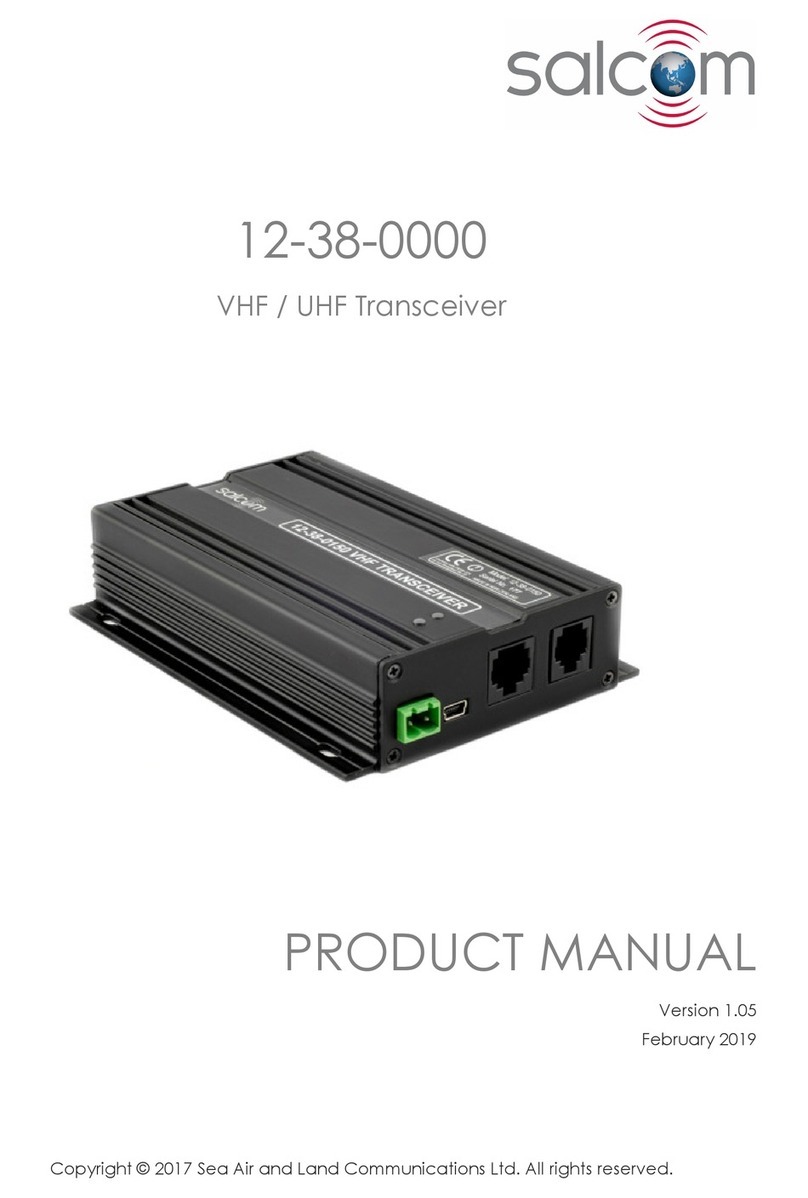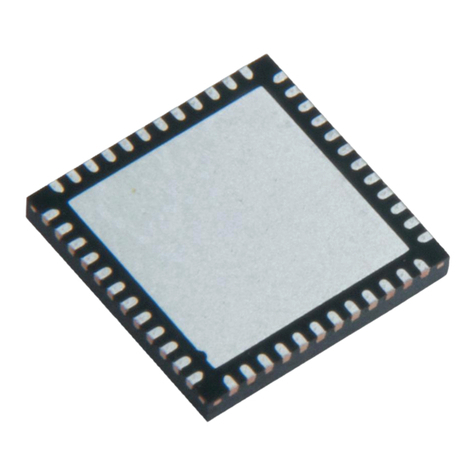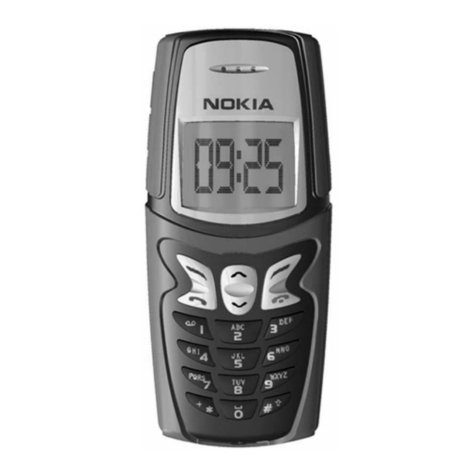Icom IC-91A User manual

SERVICE
MANUAL
VHF/UHF FM TRANSCEIVER
S-14230HZ-C1
May. 2006
VHF/UHF DIGITAL TRANSCEIVER

INTRODUCTION
This service manual describes the latest service information
for the IC-91A VHF/UHF FM TRANSCEIVER, IC-91AD
VHF/UHF DIGITAL TRANSCEIVER at the time of
publication.
ORDERING PARTS
Be sure to include the following four points when ordering
replacement parts:
1. 10-digit Icom parts number
2. Component name and informations
3. Equipment model name and unit name
4. Quantity required
<SAMPLE ORDER>
5030002880 LCD HLM7972-010100 IC-91A Main unit 5 pieces
8810009560 Screw PH BT M2×6 ZK IC-91A Chassis 10 pieces
Addresses are provided on the inside back cover for your
convenience.
REPAIR NOTES
1. Make sure the problem is internal before disassembling the transceiver.
2. DO NOT open the transceiver until the transceiver is disconnected from its power source.
3. DO NOT force any of the variable components. Turn them slowly and smoothly.
4. DO NOT short any circuits or electronic parts. An insulated turning tool MUST be used for all adjustments.
5. DO NOT keep power ON for a long time when the transceiver is defective.
6. DO NOT transmit power into a signal generator or a sweep generator.
7. ALWAYS connect a 30 dB to 40 dB attenuator between the transceiver and a deviation meter or spectrum analyzer when
using such test equipment.
8. READ the instructions of test equipment thoroughly before connecting equipment to the transceiver.
To upgrade quality, all electrical or mechanical parts and internal
circuits are subject to change without notice or obligation.
MODEL VERSION SYMBOL
IC-91AD U.S.A. USA
Export EXP
IC-91A
U.S.A. USA-1
Taiwan TPE
Korea KOR
Australia AUS
Export EXP-1
EXP-2
Icom, Icom Inc. and logo are registered trademarks of Icom Incorporated (Japan) in the United States, the United
Kingdom, Germany, France, Spain, Russia and/or other countries.
NEVER connect the transceiver to an AC outlet or to a DC
power supply 3.7 V. Such a connection could cause a fire or
electric hazard.
DO NOT expose the transceiver to rain, snow or any liquids.
DO NOT reverse the polarities of the power supply when
connecting the transceiver.
DO NOT apply an RF signal of more than 20 dBm (100 mW)
to the antenna connector. This could damage the trans-
ceiver's front end.
CAUTION

TABLE OF CONTENTS
SECTION 1 SPECIFICATIONS
SECTION 2 INSIDE VIEWS
SECTION 3 DISASSEMBLY INSTRUCTIONS
SECTION 4 UT-121 UNINSTALLATION
SECTION 5 CIRCUIT DESCRIPITON
5-1 RECEIVER CIRCUITS. . . . . . . . . . . . . . . . . . . . . . . . . . . . . . . . . . . . . . . . . . . . . . . . . . . . . . . . 5-1
5-2 TRANSMITTER CIRCUITS . . . . . . . . . . . . . . . . . . . . . . . . . . . . . . . . . . . . . . . . . . . . . . . . . . . . 5-2
5-3 PLL CIRCUITS . . . . . . . . . . . . . . . . . . . . . . . . . . . . . . . . . . . . . . . . . . . . . . . . . . . . . . . . . . . . . 5-4
5-4 OTHER CIRCUITS . . . . . . . . . . . . . . . . . . . . . . . . . . . . . . . . . . . . . . . . . . . . . . . . . . . . . . . . . . 5-5
5-5 POWER SUPPLY CIRCUITS. . . . . . . . . . . . . . . . . . . . . . . . . . . . . . . . . . . . . . . . . . . . . . . . . . . 5-5
5-6 PORT ALLOCATION . . . . . . . . . . . . . . . . . . . . . . . . . . . . . . . . . . . . . . . . . . . . . . . . . . . . . . . . . 5-5
SECTION 6 ADJUSTMENT PROCEDURES
6-1 PREPARATION . . . . . . . . . . . . . . . . . . . . . . . . . . . . . . . . . . . . . . . . . . . . . . . . . . . . . . . . . . . . . 6-1
6-2 FREQUENCY AND TRANSMIT ADJUSTMENT . . . . . . . . . . . . . . . . . . . . . . . . . . . . . . . . . . . . 6-5
SECTION 7 PARTS LIST
SECTION 8 MECHANICAL PARTS AND DISASSEMBLY
SECTION 9 SEMICONDUCTOR INFORMATION
SECTION 10 BOARD LAYOUTS
10-1 LOGIC UNIT . . . . . . . . . . . . . . . . . . . . . . . . . . . . . . . . . . . . . . . . . . . . . . . . . . . . . . . . . . . . . . . 10-1
10-2 MAIN UNIT . . . . . . . . . . . . . . . . . . . . . . . . . . . . . . . . . . . . . . . . . . . . . . . . . . . . . . . . . . . . . . . . 10-1
10-3 RF UNIT. . . . . . . . . . . . . . . . . . . . . . . . . . . . . . . . . . . . . . . . . . . . . . . . . . . . . . . . . . . . . . . . . . . 10-1
10-4 UT-121 (Optional product; CODEC UNIT for IC-91AD) . . . . . . . . . . . . . . . . . . . . . . . . . . . . . . . 10-1
10-5 VCO UNIT . . . . . . . . . . . . . . . . . . . . . . . . . . . . . . . . . . . . . . . . . . . . . . . . . . . . . . . . . . . . . . . . . 10-1
SECTION 11 BLOCK DIAGRAM
SECTION 12 VOLTAGE DIAGRAMS
12-1 LOGIC UNIT . . . . . . . . . . . . . . . . . . . . . . . . . . . . . . . . . . . . . . . . . . . . . . . . . . . . . . . . . . . . . . . 12-1
12-2 MAIN UNIT . . . . . . . . . . . . . . . . . . . . . . . . . . . . . . . . . . . . . . . . . . . . . . . . . . . . . . . . . . . . . . . . 12-2
12-3 RF UNIT. . . . . . . . . . . . . . . . . . . . . . . . . . . . . . . . . . . . . . . . . . . . . . . . . . . . . . . . . . . . . . . . . . . 12-3
12-4 VCO UNIT . . . . . . . . . . . . . . . . . . . . . . . . . . . . . . . . . . . . . . . . . . . . . . . . . . . . . . . . . . . . . . . . . 12-4
12-5 UT-121 (Optional product; CODEC UNIT for IC-91AD) . . . . . . . . . . . . . . . . . . . . . . . . . . . . . . . 12-5

1 - 1
SECTION 1 SPECIFICATIONS
GENERAL
• Frequency coverange :
• Operating mode :FM, AM*, WFM*, DV†(*RX only)
• Memory channels : 1304 channels
(Incl. 100 scan edges and 4 call ch.)
• Frequency stability : ±2.5 ppm
(–20°C to +60°C; –4°F to 140°F)
• Tuning steps : 5‡/6.25‡/8.33‡/9‡/10/12.5/15/20/
25/30/50/100/125 and 200 kHz
• Antenna impedance : 50 Ω(SMA type)
• Power supply : 10.0–16.0 V DC for external DC
power, or specified Icom’s battery
pack
• Digital transmission speed : 4.8 kbps†
• Voice coding speed : 2.4 kbps†
• Current drain (at 7.4 V DC) :
TRANSMIT VHF High 2.1 A typ.
Low 0.8 A (approx.)
UHF High 2.2 A typ.
Low 0.8 A (approx.)
RECEIVE Stand-by 170 mA typ.
(dualwatch; FM/DV†)
Max. audio 340 mA typ.
(dualwatch; FM/DV†)
• Operating temp. range : –20°C to +60°C; –4°F to 140°F
• Dimensions
(projections not included)
:
58.4 (W) × 103 (H) × 34.2 (D) mm
2 9/32 (W) × 4 1/16 (H) × 1 11/32 (D) in
• Weight (approx.) :300 g; 10.6
oz
(antenna, BP-217 included)
TRANSMITTER
• Output power (at 7.4 V DC) : 5.0 W (High)
0.5 W (Low; aprrox.)
• Modulation system FM : Variable reactance frequency
modulation
DV†GMSK reactance frequency
modulation
• Maximum deviation : ±5.0 kHz (FM wide: approx.)
±2.5 kHz (FM narrow: approx.)
• Spurious emissions : Less than –60 dB
• Ext. mic. connector : 3-conductor 2.5 (d) mm; (
1/10′′
)/2 kΩ
RECEIVER
• Receiving system :
FM/AM/DV†Double-conversion
superheterodyne system
WFM Triple-conversion
superheterodyne system
• Intermediate frequencies :
1st A band
B band
61.65/59.25 MHz (WFM)
46.35 MHz
2nd 450 kHz/13.35 MHz (WFM)
3rd 1.95 MHz (WFM only)
• Sensitivity : (except spurious points)
• Selectivity :
FM (Wide), AM More than 50 dB
FM (Narrow), DV†More than 45 dB
WFM More than 300 kHz/–3 dB
Less than 700 kHz/–20 dB
• Spurious image rejection :
VHF More than 60 dB
UHF More than 50 dB
(IF; More than 60 dB)
• Audio output power
(at 7.4 V DC)
: More than 200 mW
(at 10% distortion with an 8 Ωload)
• Ext. speaker connector : 3-conductor 3.5 (d) mm; (
1/8′′
)/8 Ω
All stated specifications are subject to change without notice or obligation.
†Available for the IC-91AD or when UT-121 is installed into the IC-91A.
-
!.
3"D
DO-
Z(
K
nPY
T
6§
Z
(-
n PYT
6§
Z(-
nPYT6§
Z(-
nPYT6§
Z(-
n
P
YT6§
Z(-
-
&7
$
!.)3"DV
E
$
Z
(
K
Z(K
nPY
T
6§Z(
-
nPY
T
6
§Z(-
nPY
T
6
§Z(-
Z
(-
TINU
D
E
ETNAR
A
U'n
Y
L
NOZ(-
D
E
ETNAR
A
U'n
Y
LN
O
Z(
-
D
EETNA
R
AU'nYL
N
OZ(-
NOISRE6
!
3
5
NAWIA
4
NAERO+
NA
I
L
AR
TSU
!
T
ROPX%
DNAB!
X4n
n
X2n
n
n
n
n
n n
X
4nn
X2n
X4n
n
X2n
D
N
A
B
"
X4n
n
X2
n
n
n
n
n
n
X4n n
X2
n
n
X4
n
n
X2
n n
P
Y§
-&
$
!
.)
3
"
D
VE$
Z
(
K
Z
(
K
&(
6Y
L
NO
D
NA
BR
UET
A
M!
P
Y
T
6§
&
(
5YLNOD
N
ABRUETA
M!
P
Y
T
6§
nP
YT
6§
Z(
-
nPY
T
6§
Z(
-
n PYT6§Z(
-
n P
YT6§Z(
-
n PY
T
6§Z(
-
n P
Y
T
6§Z(
-
n P
Y
T
6§
Z(
-
6$ 2
%
"SPBK
.0LA
T
IG
I
D o
P
YT
6§
SDNAB
RUE
TAM!
-
-
-
-
-

SECTION 2 INSIDE VIEWS
2 - 1
• MAIN UNIT (TOP VIEW) • MAIN UNIT (BOTTOM VIEW)
• UT-121
(Optional Product ; CODEC UNIT for IC-91AD)
(TOP VIEW)
• UT-121
(Optional Product ; CODEC UNIT for IC-91AD)
(BOTTOM VIEW)
• LOGIC UNIT
• RF UNIT (TOP VIEW) • RF UNIT (BOTTOM VIEW)
DC switch
Q1000: HAT1026
D1000: MA2S728
D1001: RB060
TX power amplifier
(Q100: RD01MUS1)
VCO UNIT
APC amplifier
(IC150: NJM3404)
A_BAND 1st IF mixer
(IC900: µPC2757TB)
2nd IF filters
(FI100, FI200: CFW450E)
Mode switch
(IC700: CD4066)
A_BAND PLL IC
(IC400: MB15E03SLPFV1)
A_BAND FM IF IC
(IC100: TA31136FNG)
B_BAND FM IF IC
(IC200: TA31136FNG)
A_BAND 2nd IF filter
(FI2: SFECV13.35MAS)
B_BAND 1st IF filter
(FI50: FL-335)
Clock oscillator for
IC101 / IC350
(X100: CR-820)
Clock oscillator for
IC202
(X200: CR-821)
GMSK modem IC
(IC202: CMX589AD5)
Linear codec IC
(IC350: AD73311ARSZ)
AMBE audio codec IC
(IC101: AMBE-2020)
ALC amplifier
(IC300: AN6123MS)
AF power amplifier
(IC550: NJM2070M)
Reset IC
(IC100: R1150H022D)
Reference
frequency oscillator
(X1: CR-774)
RS-232C interface
(IC52: MAX3221IPWR)
CPU
(IC1:
HD64F2238RTF13V
)
D/A converter
(IC303: M62364FP)

SECTION 3 DISASSEMBLY INSTRUCTIONS
3 - 1
• Removing the rear panel
1Unscrew 2 screws Aand remove the plate B.
2Remove the CODEC unit (UT-121) if installed. (See the
page 4-1 “2” for uninstallation)
3Unscrew 2 screws Cand 2 screws D.
4Disconnect the flat cable Efrom MAIN unit J702.
5Remove the rear panel.
• Removing the MAIN unit
1Unscrew the screw Aand 2 screws B.
2Unsolder 6 points C.
3Remove the MAIN unit from the rear panel in the direction
of the arrow.
D
E
B
A
C
Rear panel
CODEC unit
(UT-121)
J702
LOGIC unit
A
B
B
B
B
Front panel
B
A
MAIN unit
Rear panel
C
A
A
DD
B
BB
RF unit
Rear panel
C
• Removing the LOGIC unit
1Unsolder 2 points A.
2Unscrew 6 screws Band remove the LOGIC unit from the
front panel.
• Removing the RF unit
1Unsolder 2 points A.
2Unsolder 3 points Band remove the shield plate C.
3Unscrew 4 screws Dand remove the RF unit from the
rear panel

SECTION 4 UT-121 UNINSTALLATION
4 - 1
2 screws
Unit cover
UT-121
(Top view)
Notches
Tweezers
qTurn the power OFF, and remove the battery pack.
wUnscrew 2 screws to remove the unit cover.
eInsert the tweezers into the notches of the UT-121, and remove it as shown below.
rScrew 2 screws to assemble the unit cover.
2 screws
Unit cover
RECOMMENDATION:
Critical technique is necessary for the UT-121 uninstallation, therefore, we recommend you to uninstall it at your
dealer or service center.

5-1 RECEIVER CIRCUITS
This transceiver has two receiving lines called A_BAND and B_
BAND for dualwatch capability. A_BAND corresponds to FM/WFM/
AM mode receiving within 0.495–999 MHz range, and B_BAND
corresponds to FM/FM-N/AM/DV mode receiving within 118–174
MHz and 350–470 MHz ranges.
5-1-1 RF CIRCUITS (RF UNIT)
This transceiver has six RF circuits to provide wide receiving range.
The received signals from the antenna connector (CHASSIS; J1)
are applied to each RF circuit for the frequency coverage, and
amplified within the frequency coverage.
• While receiving 0.495–76 MHz
The received signals of 76 MHz and below are passed through the
low-pass filter (LPF; L200, L201, C201–C204) via the two LPFs
(L1–L3, C1–C6; L5–L7, C10–C14), attenuator (D10) and band
switch (D200).
The 0.495–30 MHz band signals are passed through the band
switch (D201), then applied to the RF amplifier (Q200) via the
low-pass filter (L202, L203, C205–C209). The 30–76 MHz band
signals are applied to the tuned RF amplifier (Q250, D252, D255)
via the band switch (D250).
The amplified signals are applied to the A_BAND 1st mixer (IC900,
pin 1) via the band switches (D203 or D256, D707).
- 0.495–76 MHz -
• While receiving 76–118 MHz or 174–260 MHz
The 76–118 MHz band signals are passed through the two LPFs
(L1–L3, C1–C6; L5–L7, C10–C14), attenuator (D10) and low-pass
filter (L300, L301, C301–C305) via the band switch (D300).
The 174–260 MHz band signals are passed through the LPF (L1–
L3, C1–C6), HPF (L4, C7–C9), attenuator (D7) and high-pass filter
(HPF; L302, L303, C306–C310) via the band switch (D302).
The filtered signals are applied to the tuned RF amplifier (Q300,
Q301, D305, D307, D308) via the band switch (D301/D303).
The amplified signals are applied to the A_BAND 1st mixer (IC900,
pin 1) via the band switches (D311, D707).
SECTION 5 CIRCUIT DESCRIPTION
5 - 1
LPF
LPF
D255
Tuned RF amplifier
D707
D256
D203
Q250
Q200
to the A_BAND
1st mixer
(IC900, pin 1)
0.495
-
30 MHz
D252
RF
amp.
ATT
D201 0.495
-
76 MHz
D250 D200
D10
2 LPFs from the
antenna
30
-
76 MHz
LPF
LPF
Tuned RF amplifier
D307, D308 Q300 D305Q301
D707
to the A_BAND
1st mixer
(IC900, pin 1)
D311
76
-
118 MHz
LPF
D301 D10
D300
LPFHPF
174
-
260 MHz
HPF
AT T
AT T
D303 D7
D302 from the
antenna
- 76–118 MHz or 174–260 MHz -
Tuned RF amplifier 2 LPFs
D402, D403 Q401 D401
D509
to the A_BAND
1st mixer
(IC900, pin 1)
D405
Tuned RF amplifier
D451, D452 Q450 D450
D400
to the B_BAND
1st mixer
(MAIN UNIT; IC50, pin 1)
D454
ATT
D10
from the
antenna
BPF
Q400 118
-
174 MHz
RF
amp.
LPF
from the
antenna
Tuned RF amplifier
260
-
350 MHz, 470
-
600 MHz
D505, D506
D7
HPF LPFATT
Q500 D502Q501
D509
to the A_BAND
1st mixer
(IC900, pin 1)
D508
D500
• While receiving 118–174 MHz
The 118–174 MHz band signals are passed through the two LPFs
(L1–L3, C1–C6; L5–L7, C10–C14) and attenuator (D10), then
applied to the RF amplifier (Q400) via the band switch (D400) and
bandpass filter (BPF; L400, L405, C400, C401).
The amplified signals are applied to the tuned RF amplifiers for A_
BAND (Q401, D401–D403) and B_BAND (Q450, D450–D452).
The amplified signals by Q401 are then applied to the A_BAND
1st mixer (IC900, pin 1) via the band switches (D405, D509).
The amplified signals by Q450 are then applied to the B_BAND
1st mixer (MAIN UNIT; IC50, pin 1) via the band switch (D454) and
J1001 (pin 15).
- 118–174 MHz -
• While receiving 260–350 MHz or 470–600 MHz
The 260–350 MHz and 470–600 MHz band signals passed through
the LPF (L1–L3, C1–C6) and HPF (L4, C7–C9), then applied to
the tuned RF amplifier (Q500, Q501, D502, D505, D506) via the
attenuator (D7) and band switch (D500).
The amplified signals are applied to the A_BAND 1st mixer (IC900,
pin 1) via the band switches (D508, D509).
- 260–350 MHz or 470–600 MHz -

5 - 2
• While receiving 350–470 MHz
The 350–470 MHz band signals are passed through the LPF (L1–
L3, C1–C6), HPF (L4, C7–C9) and attenuator (D7), then applied
to the RF amplifier (Q600) via the band switch (D600) and HPF
(L600, L601, L608, L611, C600–C602, C630, C631, C633).
The amplified signals are applied to the tuned RF amplifiers for
A_BAND (Q601, D601, D602, D604, D605) and B_BAND (Q651,
D650, D651, D653, D654).
The amplified signals by Q601 are then applied to the A_BAND
1st mixer (IC900, pin 1) via the band switch (D606).
The amplified signals by Q651 are then applied to the B_BAND
1st mixer (MAIN UNIT; IC50, pin 1) via the band switch (D655) and
J1001 (pin 15).
- 350–470 MHz -
• While receiving 600–999 MHz
The 600–999 MHz band signals are passed through the HPF
(L8, L9, C16–C18) and band switch (D700), then applied to the
tuned RF amplifier (Q700, Q701, D702–D704) via the attenuator
(D701).
The amplified signals are applied to the A_BAND 1st mixer (IC900,
pin 1) via the band switch (D706).
- 600–999 MHz -
5-1-2 1ST IF CIRCUITS (RF AND MAIN UNITS)
The 1st IF circuits contain the 1st mixer, 1st IF amplifier and the
1st IF filter. The 1st IF mixer converts the received signals into a
fixed frequency of the 1st Intermediate Frequency (IF) signal. The
converted 1st IF signal is filtered at the 1st IF filters and amplified
at the IF amplifier.
• A_BAND (0.495–999 MHz)
The received signals from the RF circuits are applied to the A_
BAND 1st IF mixer (RF UNIT; IC900, pin 1), and converted into
the 61.65 MHz (FM/AM)/59.25 MHz (WFM) 1st IF signal by being
mixed with 1st Local Oscillator (LO) signals from the VCOs (VCO
UNIT).
While receiving 0.495–76 MHz band signals, the 1st LO signals
are generated at BC BAND VCO (VCO UNIT; Q1, D1, D3, D5, D6),
and for receiving 76–260 MHz band signals, the 1st LO signals are
generated at VHF BAND VCO (VCO UNIT; Q51, D51, D54).
Tuned RF amplifier
D604, D605 Q601 D601, D602
D606
to the A_BAND
1st mixer
(IC900, pin 1)
Tuned RF amplifier
D653, D654 Q651 D650, D651
D600
D655
to the
B_BAND 1st mixer
(MAIN UNIT; IC50, pin 1)
ATT
D7
from the
antenna
HPF
Q600 350
-
470 MHz
RF
amp.
HPF LPF
from the
antenna
Tuned RF amplifier
600
-
999 MHz
D703, D704
D701
HPFATT
Q700 D702Q701
D706
to the A_BAND
1st mixer
(IC900, pin 1)
D700
While receiving 260–999 MHz band signals, the 1st LO signals are
generated at UHF BAND VCO (VCO UNIT; Q101, D101, D104).
If the receiving frequency is 600 MHz or higher, the VCO output
signal is doubled at the doubler circuit (RF UNIT; Q850) before
being applied to the 1st mixer (RF UNIT; IC900, pin 3).
In FM/AM mode, the converted IF signal is applied to the 1st IF
filter (MAIN UNIT; FI1) via the mode switch (D2) to filter out the
unwanted signals, then applied to the IF amplifier (MAIN UNIT;
Q100).
In WFM mode, the converted IF signal is applied to the 1st IF
amplifier (MAIN UNIT; Q1) via the mode switch (D2).The amplified
1st IF signal is applied to the 2nd IF mixer (MAIN UNIT; Q2), and
converted into the 13.35 MHz IF signal by being mixed with the
45.95 MHz Lo signal. The converted IF signal is passed through
the IF filter (MAIN UNIT; FI2) to filter out the unwanted signal, then
applied to the IF amplifier (MAIN UNIT; Q100).
The amplified 1st or 2nd IF signal from the IF amplifier (MAIN
UNIT; Q100) is then applied to the A_BAND IF IC (MAIN UNIT;
IC100, pin 16).
• A_BAND 1st IF CIRCUIT
• B_BAND (118–174 MHz, 350–470 MHz.)
The received signals from the RF circuits are applied to the
B_BAND 1st IF mixer (MAIN UNIT; IC50, pin 1), and converted
into the 46.35 MHz 1st IF signal by being mixed with 1st Local
Oscillator (LO) signals from the VCOs.
While receiving 118–174 MHz band signals, the 1st LO signals are
generated at B_BAND VBVCO (MAIN UNIT; Q301, D300, D301),
and for receiving 350–470 MHz band signals, the 1st LO signals
are generated at B_BAND UBVCO (MAIN UNIT; Q351, D350,
D352).
The converted 1st IF signal is passed through the 1st IF filter
(MAIN UNIT; FI50) to filter out the unwanted signal, then applied to
the 1st IF amplifier (MAIN UNIT; Q200). The amplified 1st IF signal
is then applied to the B_BAND IF IC (MAIN UNIT; IC200, pin 16).
• B_BAND 1st IF CIRCUIT
IF
amp.
D3 D2
1st/2nd IF
signal to
the IF IC
(IC100, pin 16)
BPF
FI1
LO signal
from the TCXO (X450)
via Q450, Q451
61.65 MHz
(FM/AM)
BPF
FI2
13.35 MHz
(WFM)
Q100
Q1Q2
IF
amp.
LO signals
from the VCOs
Received signals
from the
RF circuits
1st mixer
IC900
MAIN UNIT
RF UNIT
1st IF signal
to the IF IC
(IC200, pin 16)
BPF
46.35 MHz
Q200
IF
amp.
LO signals
from the VCOs
Received signals
from the
RF circuits
1st mixer
IC50
MAIN UNIT
FI50

5 - 3
5-1-3 2ND IF AND DEMODULATOR CIRCUITS
(MAIN UNIT)
The 1st IF signal is converted into the 2nd IF signal and
demodulated in the IF IC. The IF IC contains 2nd mixer, limiter
amplifier, quadrature detector, etc. in its package.
5-1-3-1 2ND IF CIRCUITS
- A_BAND (0.495–999 MHz) -
• FM/AM mode
The 1st IF signal from the IF amplifier (Q100) is applied to the 2nd
mixer in the A_BAND IF IC (IC100, pin 16), and converted into the
450 kHz 2nd IF signal by being mixed with the 61.2 MHz 2nd LO
signal from the reference frequency oscillator (X450) quadrupled
by the quadruplicater (Q452).
The converted 2nd IF signal is output from pin 3, and passed
through the 2nd IF filter (FI100) via the mode switch (D102) to
suppress sideband noise.
In FM mode, the filtered 2nd IF signal is applied to the limiter
amplifier (IC100, pin 5) via the mode switch (D103).
In AM mode, the filtered 2nd IF signal is applied to the IF amplifier
(Q103) via the mode switch (D103).
16
X100
Q101, Q102
Mode switch
MAINR3A
(+3V)
1110
A_BAND IF IC (IC100)
9 1312
“ANOIS” signal to the CPU (LOGIC UNIT; IC1, pin 26)
1st IF signal from the IF amplifier (Q100)
“S-LV” signal to the CPU (LOGIC UNIT; IC1, pin 48)
2
8 7 35
BPF
(FM/AM)
RSSI
Noise
Detector
Noise
Amplifier
Limitter
Amplifier
Quadrature
Detector
FI100
2nd IF signal to the AM demodulator (Q104, Q105)
FM-demodulated signals
to the AF amplifier circuits
X450
TCXO
L101
D102
R117
D103
15.3/61.2 MHz
2nd LO signal
Q450
Q103
X4
D450
Q452
• WFM mode
The 2nd IF signal from the IF amplifier (Q100) is applied to the 3rd
mixer in the A_BAND IF IC (IC100, pin 16), and converted into the
1.95 MHz 3rd IF signal by being mixed with the 15.3 MHz 2nd LO
signal from the reference frequency oscillator (X450).
The converted IF signal is output from pin 3, and applied to the
limiter amplifier (IC100, pin 5) via the mode switches (D102,
D103).
5-1-3-2 DEMODULATOR CIRCUITS
• FM/WFM mode
The amplified IF signal from the limiter amplifier in the IF IC is
FM-demodulated at the quadrature detector (IC100, pins, 10, 11,
X100) and output from pin 9. The demodulated AF signals are
applied to the AF amplifier circuits.
• AM mode
The amplified IF signal from the IF amplifier (Q103) is applied to
the AM demodulator (Q104, Q105).
The demodulated AF signals are applied to the AF amplifier
circuits.
- B_BAND (118–174 MHz, 350–470 MHz) -
The 1st IF signal from the 1st IF amplifier (Q200) is applied to the
2nd mixer in the B_BAND IF IC (IC200, pin 16), and converted into
the 2nd IF signal by being mixed with the 2nd LO signal from the
reference frequency oscillator (X450) tripled by the tripler (Q451).
The converted 2nd IF signal is output from pin 3, and passed
through the 2nd IF filter (FM/AM mode: FI200; FM-N mode: FI201)
via the mode switch (D202) to suppress sideband noise.
• FM/FM-N mode
The filtered 2nd IF signal is applied to the limiter amplifier in the
B_BAND IF IC (IC200, pin 5) via the mode switch (D203). The
amplified 2nd IF signal is FM-demodulated at the quadrature
detector (IC200, pins, 10, 11, X200) and output from pin 9. The
demodulated AF signals are applied to the AF amplifier circuits.
• AM mode
The 2nd IF signal is passed through the FI200 and applied to the
AM demodulator circuit (Q203, Q204) via the IF amplifier (Q202).
The demodulated AF signals are applied to the AF amplifier
circuits.
• A_BAND 2ND IF AND DEMODULATOR CIRCUITS

5 - 4
16
X200
W/N
1110
B_BAND IF IC (IC200)
9 1312
“BNOIS” signal to the CPU (LOGIC UNIT; IC1, pin 28)
1st IF signal from the 1st IF amplifier (Q200)
“BRSSI” signal to the CPU (LOGIC UNIT; IC1, pin 46)
2
8 7 35
BPF
(FM-N)
(FM/AM)
RSSI
Noise
Detector
Noise
Amplifier
Limitter
Amplifier
Quadrature
Detector
FI200
2nd IF signal to the AM demodulator (Q203, Q204)
FM-demodulated signals
to the AF circuits
X450
TCXO
D202
D203
45.9 MHz
2nd LO signal
Q450
BPF
FI201
MAINR3B
(+3V)
Q202
X3
Q451
Mode switch
Q201
Q550
MAIN UNIT LOGIC UNIT
AF
filter
IC501
AF
filter
Q552
WFM
FM/AM
AF
filter
D/A
converter
2 6
AF
power
amp.
IC550
Speaker
IC500
from the A_BAND
IF IC (IC100, pin 9)
from the B_BAND
IF IC (IC200, pin 9)
from the AM
demodulator
circuit (Q203, Q204)
from the AM
demodulator
circuit (Q104, Q105)
1 2
3 4
10 11
13
21
15
23
IC700
11 10 2 7
[SP] jack
IC303
5-1-4 AF AMPLIFIER CIRCUITS
(MAIN AND LOGIC UNITS)
The demodulated AF signals from the demodulator circuits are
amplified and filtered in AF amplifier circuits.
- A_BAND -
• FM/WFM mode
The demodulated AF signals from the A_BAND IF IC (MAIN UNIT;
IC100, pin 9) are applied to the mode switch (MAIN UNIT; IC500,
pins 1, 2) and then passed through the AF filter (MAIN UNIT;
Q550, Q552).
• AM mode
The demodulated AF signals from the AM-demodulator circuit
(MAIN UNIT; Q104, Q105) are applied to the AF switch (MAIN
UNIT; D105) and then passed through the AF filter (MAIN UNIT;
Q550, Q552).
- B_BAND -
• FM/FM-N mode
The demodulated AF signals from the B_BAND IF IC (MAIN UNIT;
IC200, pin 9) are applied to the mode switches (MAIN UNIT; IC500,
pins 10, 11, IC700, pins 11, 10) and then passed through the AF
filter circuit (MAIN UNIT; IC501 pins 1, 2; 6, 7).
• B_BAND 2ND IF AND DEMODULATOR CIRCUITS
• AM mode
The demodulated AF signals from the AM-demodulator circuit
(MAIN UNIT; Q203, Q204) are applied to the AF (MAIN UNIT;
D205) and mode switches (MAIN UNIT; IC700, pins 10, 11) and
then passed through the AF filter (MAIN UNIT; IC501 pins 1, 2;
6, 7).
The filtered AF signals are applied to the D/A converter (LOGIC
UNIT; IC303 for A_BAND; pins 21, 22; 23, 24/for B_BAND;
pins 13–16) and level adjusted. The level adjusted AF signals
are applied to the AF power amplifier (LOGIC UNIT; IC550, pin
2). The power amplified AF signals are then output from pin 6,
and applied to the internal speaker (CHASSIS; SP1) via [SP]
connector (MAIN UNIT; J700).
5-1-5 AGC CIRCUIT (MAIN AND RF UNITS)
A portion of the AM-demodulated signals are converted into DC
voltage by AGC (Automatic Gain Control) detector (MAIN UNIT;
Q104; A_BAND/Q203; B_BAND), and fed back to the IF and RF
circuits as the AGC signal.
• AF CIRCUITS

5 - 5
The IDC limits the level of the amplitude of MIC signals to prevent
over deviation. The limited MIC signals are output from pin 7 and
passed through the splatter filter (IC302, pins 8, 9).
The splatter filter suppresses 3 kHz and higher audio
components.
The filtered MIC signals are applied to the D/A converter (IC303,
pin 1) via the mode switch (IC304, pins 10, 11). The D/A converter
(IC303) adjusts the deviation according to “DATA” signal from the
CPU (IC1, pin 30).
The level adjusted MIC signals are output from pin 2 and then
applied to the modulation circuit (VCO UNIT; D55 or D100) to
modulate the VCO oscillating signal.
• MICROPHONE AMPLIFIER CIRCUIT
The AGC signal controls the bias of the IF amplifiers (MAIN UNIT;
Q100, Q103/Q200, Q202) and RF amplifiers (RF UNIT; Q200,
Q250, Q300, Q301, Q401, Q500, Q501, Q601/Q700, Q701,
Q450, Q651) according to the received signal strength to prevent
audio distortion and stabilize the demodulated AF signal level.
5-1-6 SQUELCH CIRCUITS (MAIN AND LOGIC
UNITS)
• NOISE SQUELCH
The noise squelch mutes the AF output signals when no RF
signals are received. By detecting noise components in the
demodulated AF signals, the squelch circuit toggles the AF power
amplifier ON and OFF.
A portion of the FM-demodulated AF signals from the IF IC (MAIN
UNIT; IC100/IC200 (A_BAND/B_BAND), pin 9) is passed through
the noise filter (MAIN UNIT; IC100/IC200, pins 7, 8, R109–R113,
C118–C122/R212–R216, C218–C222).The filtered noise signals
are then applied to the noise amplifier in the IF IC to be amplified
the noise components only.
The amplified noise components are converted into the pulse-
type signal at the noise detector section, and output from pin 13
as the noise signal (A_BAND: “ANOIS”/B_BAND: “BNOIS”). The
noise signal is applied to the CPU (LOGIC UNIT; IC1, pin 26/28),
then the CPU outputs “AFON” signal from pin 97 according to
the noise detection signal level to toggle the AF power amplifier
regulator (LOGIC UNIT; Q105, Q106) ON and OFF.
• TONE SQUELCH
The tone squelch detects the tone signal in the demodulated AF
signals, and opens the squelch only when matched subaudible
tone frequency is detected in the received signal.
While the tone squelch is in use, and the received signal contains
no sub-audible tone signal or mismatched tone frequency, the
tone squelch mutes the AF signals even if the noise squelch is
open.
A portion of the demodulated AF signals from the IF IC (MAIN
UNIT; IC100/IC200, pin 9) are passed through the two-staged
CTCSS/DTCS filter (MAIN UNIT; IC150/IC250, pins 3, 1 and pins
5, 7) via the mode switch (MAIN UNIT; IC500, pins 1, 2/10, 11)
to suppress unwanted voice signals. The filtered CTCSS/DTCS
signals (A_BAND: “ATONE”/B_BAND: “BTONE”) are applied
to the CPU (LOGIC UNIT; IC1, pin 49/45) via the tone selector
(MAIN UNIT; IC703, pins 3, 4/10, 11).
The CPU decodes the CTCSS/DTCS signal, and outputs “AFON”
signal from pin 97 according to the set CTCSS/DTCS signal to
toggle the AF power regulator (LOGIC UNIT; Q105, Q106) ON
and OFF.
5-2 TRANSMITTER CIRCUITS
5-2-1 MICROPHONE AMPLIFIER CIRCUIT
(LOGIC UNIT)
The microphone amplifier circuit contains AF amplifier, IDC,
splatter filter, etc. The AF signals from the microphone (thereafter,
it is called “MIC signals”) are filtered and level-adjusted at this
circuit.
MIC signals from the microphone (MC300) are applied to the MIC
amplifier (Q302), then the amplified MIC signals are applied to
the mode switch (IC301, pin 1). In FM mode, the MIC signals are
output from pin 6 and applied to the IDC (Instantaneous Deviation
Control; IC302, pin 5).
In DV mode†, the MIC signals are output from pin 7 and applied to
the IDC (IC302, pin 5) via the ALC amplifier (IC300, pins 3, 5).
IC302
IC301
Microphone Q302
1
7
3 5
6
7
85
Mode
switch
to the
VCO
IDC SPLATTER
MIC
1 2
D/A
converter
9
IC300
ALC IC304
11 10
IC303
DV mode* onry
5-2-2 MODULATION CIRCUIT (VCO UNIT)
The modulation circuit modulates the VCO oscillating signal with
the AF signals from the microphone and the tone signals from the
CPU.
• MICROPHONE SIGNALS
The level adjusted MIC signals from the D/A converter (LOGIC
UNIT; IC303, pin 2) are applied to the D55 (in transmitting on 144
MHz band) or D100 (in transmitting on 430 MHz band) to modulate
the VCO oscillating signal by changing the reactance of D55 or
D100. The modulated VCO output signal is buffer-amplified by
Q200 and Q201, then applied to the transmit amplifiers via TX/RX
switch (RF UNIT; D100) and amplifier (RF UNIT; IC100, pins 1, 4),
as a transmit signal.
• TONE SIGNALS
The CTCSS and DTCS signals are generated by the CPU (LOGIC
UNIT; IC1) and output from pin 43.
The CTCSS/DTCS signals are passed through the tone filter
(Q307, R338–R340, C339, C340). The filtered tone signals are
mixed with the MIC signal coving from the IDC amplifier (LOGIC
UNIT; IC302 pin 7), then applied to the modulation circuit via the
the splatter filter, mode switch and D/A converter.
The CTCSS/DTCS signals are passed through the tone filter
(Q307, R338–R340, C339, C340). The filtered tone signals are
mixed with the MIC signals come from the IDC amplifier (LOGIC
UNIT; IC302, pin 7), then applied to the modulation circuit (D55
or D100) via the splatter filter (LOGIC UNIT; IC302, pins 9, 8),
mode switch (LOGIC UNIT; IC304, pins 11, 10) and D/A converter
(LOGIC UNIT; IC303, pins 4, 3).
5-2-3 TRANSMIT AMPLIFIERS (RF UNIT)
The VCO output signal is amplified to transmit output power level
by the transmit amplifiers.
The VCO output signal from the amplifier (IC100) is applied to the
pre-driver (Q102), driver (Q101) and power (Q100) amplifiers in
sequence to be amplified to the transmit output power level. The
power amplified transmit signal is passed through the antenna
switching circuit and transmit filters.
†Available for IC-91AD or when the optional UT-121 is installed into IC-91A.

5 - 6
5-2-4 APC CIRCUIT (RF UNIT)
The APC (Automatic Power Control) circuit stabilizes transmit output
power and controls it High or Low. The APC of this transceiver is a
current monitoring type that detects the transmit signal current of
the transmit amplifiers and controls the transmit output power.
While transmitting, the voltagedrop in R161 is detected by the
current detection circuit (Q150) and applied to the APC controller
(IC150, pin 6).Also, “PSET”signal (power setting reference voltage)
from the D/A converter (IC950, pin 19) is applied to another input
(pin 5).
Then the voltage difference between pins 5 and 6 is output from
pin 7, and the transmit output power is controlled by varying of the
gate voltage of the power amplifier (Q100).
When the transmit output power is set to Low, the driver gate
voltage “DSET” is controlled at the same time as the power setting
reference voltage “PSET” and the dynamic range of the power
control is ensured. Thus, the APC circuit maintains a constant
transmit output power.
• APC CIRCUIT
5-3 PLL CIRCUITS
5-3-1 VCO CIRCUITS (VCO UNIT AND MAIN UNIT)
This transceiver has 5 VCOs; BC BAND VCO, VHF BAND VCO,
UHF BAND VCO, B_BAND VBVCO and B_BAND UBVCO. The
BC BAND VCO, B_BAND VBVCO and B_BAND UBVCO oscillate
the 1st LO signals. The VHF BAND VCO and UHF BAND VCO
oscillate both transmit output signal and 1st LO signals.
- A_BAND -
• BC BAND VCO
The BC BAND VCO (VCO UNIT; Q1, D1, D3, D5, D6) generates
the 1st LO signals for receiving 0.495–76 MHz signals. The output
signals are amplified at the buffer amplifiers (VCO UNIT; Q200,
Q201), then applied to the 1st mixer (RF UNIT; IC900, pin 3) via
TX/RX switch (RF UNIT; D850).
• VHF BAND VCO
The VHF BAND VCO (VCO UNIT; Q51, D51, D54, D55) generates
both of transmit output signal for 144 MHz band and 1st LO signals
for receiving 76–260 MHz.
While receiving, the VCO oscillates the 1st LO frequency, and the
output signals are amplified at the buffer amplifiers (VCO UNIT;
Q200, Q201). The buffer-amplified signals are applied to the 1st
mixer (RF UNIT; IC900, pin 3) via TX/RX switch (RF UNIT; D850).
While transmitting, the VCO oscillates the transmit frequency,
and the output signal is amplified at the buffer amplifiers (VCO
UNIT; Q200, Q201). The buffer-amplified signals are applied to the
transmit amplifiers via TX/RX switch (RF UNIT; D100).
• UHF BAND VCO
The UHF BAND VCO (Q101, D100, D101, D104) generates both
of the transmit output signal for 430 MHz band and 1st LO signals
for receiving 260–999 MHz.
While receiving, the VCO oscillates the 1st LO frequency, and the
output signals are amplified by the buffer amplifiers (VCO UNIT;
Q200, Q201). If the receiving frequency is 600 MHz and below,
the buffer-amplified signals are applied to the 1st mixer (RF UNIT;
IC900, pin 3) via TX/RX switch (RF UNIT; D850). If the receiving
frequency is 600 MHz and higher, the buffer-amplified signals are
applied to the doubler circuit (RF UNIT; Q850), then the doubled
signals are applied to the 1st mixer (RF UNIT; IC900, pin 3).
While transmitting, the VCO oscillates the transmit frequency, and
the output signal is amplified at the buffer amplifiers (VCO UNIT;
Q200, Q201), then applied to the transmit amplifiers via TX/RX
switch (RF UNIT; D100).
A portion of the VCO output signals generated at BC/VHF/UHF
BAND VCO are applied to the PLL IC (RF UNIT; IC800, pin 4) via
buffer amplifiers (VCO UNIT; Q200, Q202) for comparison signal.
- B_BAND -
• VBVCO
The VBVCO (MAIN UNIT; Q301, D300, D301) generates the 1st
LO signals for receiving 118–174 MHz signals. The output signals
are amplified at the buffer amplifier (MAIN UNIT; Q353), then
applied to the 1st mixer (MAIN UNIT; IC50, pin 3).
• UBVCO
The UBVCO (MAIN UNIT; Q351, D350, D352) generates the 1st
LO signals for receiving 350–470 MHz signals. The output signals
are amplified at the buffer amplifier (MAIN UNIT; Q353), then
applied to the 1st mixer (MAIN UNIT; IC50, pin 3).
A portion of the VCO output signals generated at VBVCO/UBVCO
are applied to the PLL IC (MAIN UNIT; IC400, pin 8) via buffer
amplifier (MAIN UNIT; Q353) for comparison signal.
Current
detection
APC
controller
Q150
R161
IC150
3
5
6
1
7
DSET
VCC
PSET
Q101 Q100
to the
transmit
filters
from the
pre-driver
(Q102)
Driver
amp. Power
amp.
5-2-5 TRANSMIT FILTERS (RF UNIT)
The power amplified transmit signal from the power amplifier is
filtered at the transmit filters. The transmit filters prevent unwanted
RF signals being emitted to the air.
While transmitting in 144 MHz band, the power amplified transmit
signal is passed through the LPF (L102, L103, C106, C107), antenna
switch (D8) and two LPFs (L5–L7, C10–C14; L1–L3, C1–C6) before
being applied to the antenna connector (CHASSIS; J1).
• 144 MHz
to the antenna
LPF
LPF
LPF
from the
power amplifier
(Q100) D8
ANT
SW
While transmitting in 430 MHz band, the power amplified transmit
signal is passed through the HPF (L100, L101, C100–C103),
antenna switch (D1, D2), HPF (L4, C7–C9) and LPF (L1–L3, C1–
C6) before being applied to the antenna connector (CHASSIS; J1).
• 430 MHz
LPF
HPF
HPF
to the antenna
D1, D2
ANT
SW
from the
power amplifier
(Q100)

5 - 7
5-3-2 PLL CIRCUITS (RF AND MAIN UNITS)
The PLL circuit provides stable oscillation of the transmit frequency
and receive 1st LO frequency. The PLL circuit compares the phase
of the divided VCO frequency with the reference frequency. The
PLL output frequency is controlled by the divided ratio (N-data)
from the CPU.
• A_BAND PLL CIRCUIT
The buffer amplified signals from the buffer amplifier (VCO UNIT;
Q202) are applied to the PLL IC (RF UNIT;IC800, pin 4).The applied
signals are divided at the prescaler and OSC counter according to
the “PLLDATA” signal from the CPU (LOGIC UNIT; IC1, pin 94).
The divided signal is phasecompared with the reference frequency
at the phase detector.
Input Register
OSC
Counter Pre-
scaler
Phase
Detector
Charge
Pump
Loop
filter
6
Buffer
amp.
LO
amp.
Buffer
amp.
Q201
Doubler
Q850
Q202
Q200
10
12
13
“CK”
9
“UNLK” signal to the CPU
(LOGIC UNIT; IC1, pin 92)
from the CPU (LOGIC UNIT; IC1)
PLL IC control signals
PLL IC (IC800)
VCO BOARD
RF UNIT
“PLLDATA”
“APLLSTB”
Reference frequency
signal 15.3 MHz
from the TCXO
(MAIN UNIT; X450)
2 4
Q51,D51,D54,D55
VHF BAND VCO
Q1,D1,D3,D5,D6
BC BAND VCO Q101,D100,D101,D104
UHF BAND VCO
Reference
Counter
BCLV VLV
R815 R811
ULV
D850
PLLOUT
LOOUT ×2
D100
transmit signal
to the transmit
amplifiers
1st LO signals to the
1st mixer (IC900, pin 3)
IC100 41
• A_BAND PLL AND VCO CIRCUITS
The phase difference is output from pin 2 as a pulse type signal
after being passed through the internal charge pump. The output
signal is applied to the BC/VHF/UHF BAND VCOs (VCO UNIT)
after being converted into the DC voltage (lock voltage) at the loop
filter (RF UNIT; C820–C823, R806–R808).
The lock voltage for BC BAND VCO (“BCLV”) from the loop filter
is applied to the VCO (VCO UNIT) via R815 and pin 1 of J800
(RF UNIT). The lock voltage for VHF BAND VCO (“VLV”) from the
loop filter is applied to the VCO (VCO UNIT) via R811 and pin 6
of J800 (RF UNIT). The lock voltage for UHF BAND VCO (“ULV”)
from the loop filter is applied to the VCO (VCO UNIT) via pin 16 of
J800 (RF UNIT).

5 - 8
Input Register
OSC
Counter Pre-
scaler
Phase
Detector
Charge
Pump
Loop filter
X450
15.3 MHz
15.3/61.2 MHz
2nd LO signal
45.9 MHz
2nd LO signal
1
Buffer
amp.
Q353
Q450
9
10
11
“CK”
12
×3
×4
“BPS” signal to the CPU
(LOGIC UNIT; IC1, pin 93)
15.3 MHz “REF”
signal to the PLL IC
(RF UNIT; IC800, pin 6)
from the CPU
(LOGIC UNIT; IC1)
PLL IC control signals
PLL IC (IC400)
MAIN UNIT
“PLLDATA”
“BPLSTB”
5 5
Q301,D300,D301
VBVCO
Q351,D350,D352
UBVCO
TCXO
Reference
Counter
D450 Q451
Q452
1st LO signals to the
1st mixer (IC50, pin 3)
Buffer
amp.
• B_BAND PLL CIRCUIT
The buffer amplified signals from the buffer amplifier (MAIN UNIT;
Q353) are applied to the PLL IC (MAIN UNIT; IC400, pin 8). The
applied signals are divided at the prescaler and OSC counter
according to the “PLLDATA” signal from the CPU (LOGIC UNIT;
IC1, pin 94). The divided signal is phasecompared with the
reference frequency at the phase detector.
The phase difference is output from pin 5 as a pulse type signal
after being passed through the charge pump. The output signal is
applied to the B_BAND VBVCO/UBVCO (MAIN UNIT) after being
converted into the DC voltage (lock voltage) at the loop filter (MAIN
UNIT; R404–R406, C410–C412, C414). The lock voltage from the
loop filter is applied to each VCO.
If the oscillated signal drifts, its phase changes from that of the
reference frequency, causing a lock voltage change to compensate
for the drift in the oscillated frequency.
• B_BAND PLL AND VCO CIRCUITS
5-4 DIGITAL CIRCUITS
5-4-1 LINER CODEC
(UT-121; CODEC UNIT for IC-91AD)
IC350 is a liner codec IC which converts transmitting AF signals
from the LOGIC unit into digital signals, and outputs them to the
audio codec IC (IC101) as 16-bit audio data.
IC350 also converts the 16-bit audio data from the audio codec IC
(IC101) into analog signals, and outputs them to the LOGIC unit as
the receiving AF signals.
5-4-2 AUDIO CODEC
(UT-121; CODEC UNIT for IC-91AD)
IC101 is an AMBE audio codec IC. While receiving, digital signals
from the LOGIC unit are expansion decoded in IC101, and output
to the liner codec IC (IC350).
While transmitting, 16-bit audio data from the liner codec IC (IC350)
are compression coded in IC101, and output to the LOGIC unit.
5-4-3 MODEM (UT-121; CODEC UNIT for IC-91AD)
IC202 is a GMSK modem IC. While receiving, demodulated AF
signals from the MAIN unit are output to the LOGIC unit as digital
signals synchronized with clock signal.
While transmitting, digital signals from the LOGIC unit are converted
into GMSK base-band signal, and output to the LOGIC unit.

5 - 9
Pin
No.
Port
Name Description
1 BLED
Outputs TX/RX indicator (DS201) control
signal to the TX/RX LED driver (Q201).
“High”=While the squelch is open.
2 LIGHT
Outputs backlight control signal to the
backlight LEDs driver (Q203).
“High”=While backlight is ON.
3–7 KR0–KR4 Input ports for keypad.
8 POWER Input port for [PWR] key (S1).
“Low”=When the key is pushed.
9BATT
Outputs power supply line select signal to the
DC switch (IC50, Q35).
10 ESIO I/O port for data signal from the EEPROM
(IC51).
11 ECK Outputs clock signal to the EEPROM (IC51).
13–
17 KS0–KS3 Input ports for keypad.
22 PTT Input port for [PTT] key (MAIN UNIT; S701).
“High”=While the key is pushed.
23 SQL Input port for [SQL] key (MAIN UNIT; S700).
“Low”=While the key is pushed.
24, 5 DICK, DIUD Input ports for [DIAL] (MAIN UNIT; S702).
26 ANOIS Input port for noise signal from the A_BAND
IF IC (MAIN UNIT; IC100).
27 DTCS
Outputs tone filter passband control signal
to the tone filter (R337–R340, C338–C341)
switch (Q307).
“High”=During mode operation.
28 BNOIS Input port for noise signal from the B_BAND
IF IC (MAIN UNIT; IC200).
29 IOSTB1 Outputs strobe signal to the D/A converter (RF
UNIT; IC951).
3 0 DATA
Outputs common data signal to the D/A
converters (LOGIC UNIT; IC303, MAIN UNIT;
IC702, RF UNIT; IC951).
31 AMBETXD†Outputs AME TX data to the attached UT-121
(CODEC UNIT for IC-91AD).
32 AMBERXD†Input ports for AME RX data from the
attached UT-121 (CODEC UNIT for IC-91AD).
33 CK
Outputs common clock signal to the D/A
converters (LOGIC UNIT; IC303, MAIN UNIT;
IC702, RF UNIT; IC951).
34 DASTB1 Outputs strobe signal to the D/A converter (RF
UNIT; IC950).
35 DASTB2 Outputs strobe signal to the D/A converter
(IC303).
36 CHGC
Outputs charge control signal to the charger
circuit (Q150, Q153, D150, D152).
“High”=While charging.
37 CHGH
Outputs charging current control signal to the
charger circuit (Q150, Q153, D150, D152).
“High”=When the charging is completed.
38 CPUHV
Inputs HV line detection signal from the HV
line voltage detector (Q51, D52).
“Low”=While no exrternal DC power supply is
connected.
39 PCON
Outputs power control signal to the +3V
regulator (Q100, Q101, D100).
“Low”=While the transceiver’s power is OFF.
41 MUTE
Outputs TX mute signal to the mode switch
(IC301).
“High”=While the transmitting is muted.
43 CTCOUT Outputs CTCSS/DTCS signals.
5-6 CPU PORT ALLOCATION
†Available for the IC-91AD or when UT-121 is installed into
the IC-91A.
Line Description
HV
The same voltage as the connected external
power supply thrugh the external DC IN jack (RF
UNIT; J1000).
VCC
The same voltage as the attached battery pack
passed through the DC switch (RF UNIT; Q1000,
D1000, D1001).
The voltage is applied to the drive amplifier (RF
UNIT; Q101), power amplifier (RF UNIT; Q100)
and LED driver (LOGIC UNIT; Q202, Q203).
+3CPU
Common 3 V converted from VCC line at the
CPU3 regulator (LOGIC UNIT; IC100).
The converted voltage is applied to the CPU (IC1),
EEPROM (IC51), etc.
+3V
Common 3 V converted from +3CPU line at the
+3V regulator (Q100, Q101, D100).
The converted voltage is applied to the PLL IC
(RF UNIT; IC800), D/A converters (MAIN UNIT;
IC701, IC702), etc.
RFR3
Rceive 3 V controlled by RFR3 regulator (Q602,
Q603) using “R3C”signal from the expand IC
(MAIN UNIT; IC701, pin 14), controlled by strobe
signal "IOSTB3" from the CPU (LOGIC UNIT;
IC1, pin 87).
The voltage is applied to the RF circuits (RF UNIT).
T5
Transmit 5 V controlled by T5 regulator (Q650–Q652)
using “TXC”signal from the CPU (IC1, pin 99).
The controlled voltage is applied to the APC ampli-
fier (IC150), pre-driver (Q102), etc.
VCO3V
Common 3 V converted from VCC line at the
VCO3V regulator (Q800, Q801, D800, D801).
The voltage is applied to the VCO regulators.
BCVCO3
Rceive 3 V controlled by BCVCO3 regulator (RF
UNIT; Q801) using “BCVCOC" signal from the
expander (RF UNIT; IC951, pin 5), controlled by
“IOSTB1”signal from the CPU (IC1, pin 29).
The controlled voltage is applied to the BC BAND
VCO (VCO UNIT; Q1, D1, D3, D5).
VVCO3
Common 3 V controlled by VVCO3 regulator
(Q800) using “VAVCOC”signal from the expander
(IC951, pin 6), controlled by the “IOSTB1”from the
CPU (LOGIC UNIT; IC1, pin 29).
The controlled voltage is applied to the VHF BAND
VCO (VCO UNIT; Q51, D51, D54, D55).
UVCO3
Common 3 V controlled by VVCO3 regulator
(Q800) using “UAVCOC”signal from the expander
(IC951, pin 7), controlled by the “IOSTB1”from the
CPU (LOGIC UNIT; IC1, pin 29).
The controlled voltage is applied to the UHF BAND
VCO (VCO UNIT; Q101, D100, D101, D104).
+5.5V
Common 5.5 V boosted at the DC-DC up-con-
verter (IC101, D101).
The boosted voltage is applied to the PLL IC (RF
UNIT; IC800), PLL IC (MAIN UNIT; IC400), refer-
ence oscilator (X450), etc.
5-5 POWER SUPPLY CIRCUITS (LOGIC UNIT)

5 - 10
Pin
No.
Port
Name Description
44 DTMF Outputs DTMF/beep/1750 Hz tone signals.
45 BTONE
Input port for tone signals (B_BAND; CTCSS,
DTCS, etc.) from the tone selector (MAIN UNIT;
IC703).
46 ATONE
Input port for tone signals (A_BAND; CTCSS,
DTCS, etc.) from the tone selector (MAIN UNIT;
IC703).
47 S-LV Input port for RSSI signal from the D/A
converter (MAIN UNIT; IC700).
48 VOL Input port for audio level setting signal from the
volume controller (MAIN UNIT; S702).
49 BRSSI Input port for RSSI signal (B_BAND) from the IF
IC (MAIN UNIT; IC200).
50 TEMP
Input port for transceiver’s temperature
detection signal from the detecting temperature
selector (IC50).
51 VIN Input port for the volatge level from the
connected power supply.
59 RESET Input port for reset signal from the reset IC
(IC100).
69 CLSFT Outputs CPU clock frequency shift signal to the
clock frequency oscillator (X1, D103).
70 ACQ†Outputs ACQ signal to the modem IC (UT-121;
IC202).
71 DCEL†Outputs DSEL signal to the modem IC (UT-121;
IC202).
72 RXCK†Input port for RX clock signal from the modem
IC (UT-121; IC202).
73 RXDT†Input port for RX data to the modem IC (UT-121;
IC202).
74 TXDT†Outputs TX data to the modem IC (UT-121;
IC202).
75 TXCK†Input port for TX clock signal from the modem
(UT-121; IC202).
83 TX232 Outputs data signal to the RS-232C driver
(IC52).
84 RX232 Input port for data signal from the RS-232C
driver (IC52).
85 AMBECLK†Outputs AME clock signal to the DSP IC
(UT-121; IC101).
86 AMBERES†Outputs AME reset signal to the DSP IC (UT-121;
IC101).
87 IOSTB3 Outputs strobe signal to the D/A converter
(MAIN UNIT; IC701).
88 AMBESTB†Outputs AME strobe signal to the DSP IC
(UT-121; IC101).
89 AMBEEPR†Input port for AMEEPR signal from the DSP IC
(UT-121; IC101).
90 DVC
Outputs +3D line control signal to the 3.3 V
regulator (UT-121; Q50, Q51).
“Low”=During DV†mode operation.
91 D_AS
Outputs mode select signal to the mode switch
(IC301).
“Low”=During DV†mode operation.
92 BPS
Outputs power control signal to the B_BAND
PLL IC (MAIN UNIT; IC400).
“Low”=During in power save mode.
93 UNLK
Input port for unlock signal from the PLL IC (RF
UNIT; IC800).
“Low”=While the PLL is unlocked.
94 PLLDATA Outputs data signal to the PLL IC’s (MAIN UNIT;
IC400, RF UNIT; IC800).
95 BPLSTB Outputs strobe signal to the PLL IC (MAIN
UNIT; IC400).
Pin
No.
Port
Name Description
96 IOSTB2 Outputs strobe signal to the D/A converter
(MAIN UNIT; IC702).
97 AFON
Outputs AF power amplifier control signal to the
AF6V regulator (Q105, Q106).
“High”=While the squelch is open.
98 APLLSTB Outputs strobe signal to the A_BAND PLL IC
(RF UNIT; IC800).
99 TXC
• Outputs transmitter circuit control signal to the
LED driver (Q200) and the T5 regulator
(MAINUNIT; Q650–Q652)
“High”=While transmitting.
100 MICC
Outputs microphone amplifier (Q302) and ALC
circuit (IC301) control signal to the microphone
amplifier driver (Q300).
“Low”=While transmitting.
5-6 CPU PORT ALLOCATION (continued)
†Available for the IC-91AD or when UT-121 is installed into
the IC-91A.

SECTION 6 ADJUSTMENT PROCEDURES
¤ REQUIRED TEST EQUIPMENTS
EQUIPMENT GRADE AND RANGE EQUIPMENT GRADE AND RANGE
DC power supply Output voltage : 5.0–13.5 V DC
Current capacity : More than 2.5 A
Standard signal
generator (SSG)
Frequency range : 0.1–1800 MHz
Output level : 0.1 µV to 32 mV
(–127 to –17 dBm)
RF power meter
(terminated type)
Measuring range : 0.1–7 W
Frequency range : 100–500 MHz
Impedance : 50 Ω
SWR : Less than 1.2 : 1
Frequency counter
Frequency range : 0.1–500 MHz
Frequency accuracy : ±1 ppm or better
Sensitivity : 100 mV or better Oscilloscope Frequency range : DC–20 MHz
Measuring range : 0.01–20 V
FM deviation meter Frequency range : 30–500 MHz
Measuring range : 0 to ±10 kHz AC millivoltmeter Measuring range : 10 mV to 10 V
Audio generator
Frequency range : 300–3000 Hz
Output level : 1–500 mV
(–47 to 7 dBm)
External speaker Input impedance : 8 Ω
Capacity : More than 50 mW
Attenuator Power attenuation : 20 or 30 dB
Capacity : More than 7 W
6-1 PREPARATION
When adjusting IC-91A/AD, these test equipments, OPC-254L and the JIG cables (see the illust below) are required.
¤CONNECTION
FM
deviation meter Osciiloscope
Attenuator
20 dB or 30 dB
Frequency
counter
to the antenna connector
• JIG cable
Standard signal generator
0.1 µV to 32 mV
(–127 dBm to –17 dBm)
CAUTION!
DO NOT transmit while
the SSG is connected to
the antenna connector.
Audio generator
300 Hz to 3 kHz
AC
millivoltmeter
to the [MIC] jack
IC-91A/AD
To the [DC IN] jack
OPC-254L
DC power supply for
“TX power IDLING/FINAL” adjustment
DC power supply for other adjustments
(Except “TX power IDLING/FINAL”)
to the [SP] jack
• JIG cable
RF power meter
0.1−7 W/50 Ω
DC power supply*
5.0–7.5 V/2.5 A
*Be sure the polarity.
MIC
GND
PTT
33 kΩ
1 kΩ
CLONE
GND
:
e
t
i
h
W
:kc
a
lB
DC power supply
13.5 V/2.5 A
6 - 1

6 - 2
¤ENTERING ADJUSTMENT MODE
qTurn the power OFF.
wConnect the JIG cables (see page 6-1) to the [SP] and
[MIC] jacks.
eWhile pushing [SQL] and [8] keys, turn the power ON.
During adjustment mode, the function dispaly shows the
adjustment item, frequency, etc. as below.
¤QUITING ADJUSTMENT MODE
• While pushing [VFO], [MR] and [BAND] keys, turn the power
OFF.
¤KEY ASSIGNMENTS FOR ADJUSTMENT MODE
• : Selects the next adjustment item.
• : Selects the previous adjustment item.
• : Adjusts the value for the item manually.
• : Stores the set value.
Adjusts the value for the item automatically.
[DIAL]
NOTE: The set value storing cannot be performed
during transmit. Release PTT switch to
return to receive first, then push this key to
store the set value.
CAUTION!: BACK UP the originally programmed memory
data in the transceiver before starting the
adjustment.
There is possiblity of losing original memory
data when the adjustment is finished.
(4
#(/
.19

6-2 TRANSMITTER ADJUSTMENT
• Set the specified value using [DIAL], and push [BAND] to store the set value. Then push [2] to move to the next adjustment item.
NOTE: “REFERENCE FREQUENCY” should be adjusted before “FM DEVIATION” and “RXBPF.” Otherwise, these adjustments
will not be adjusted properly.
ADJUSTMENT ITEM ADJUSTMENT CONDITION VALUE
REFERENCE
FREQUENCY
[Fr] (4
1 • Connect an RF power meter to the antenna connector.
• Loosely couple a frequency counter to the antenna connector.
• Transmitting
440.000 MHz
TX POWER
IDLING 5.0 V
(VHF)
[id] KF
1 • Power supply voltage : 5.0 V
• Adjustment value of 2Q: 00
• Connect an RF power meter to the antenna connector.
• Transmitting 10 mW
(UHF) 2 • Transmitting
FINAL 5.0V
(VHF)
[Po] 2Q
1 • Transmitting
0.1 W
(UHF) 2 • Transmitting
TX POWER
IDLING 7.4V
[Id] +F
(VHF)
1 • Power supply voltage : 7.4 V
• Adjustment value of 2Q: 00
• Transmitting [HIGH]: 5.0 W
[LOW]: 40–100 mW
(UHF) 2 • Transmitting
NOTE: Take notes of this adjustment value.
(This value is used as reference for “TX POWER IDLING 13.5V” adjustment)
FINAL 7.4V
[Po] 2Q
(VHF)
1 • Transmitting
[HIGH]: 5 W
[LOW]: 0.5 W
(UHF) 2 • Transmitting
TX POWER
IDLING 13.5V
[Id] +F
(VHF)
1 • Power supply voltage : 13.5 V
• Adjustment value of 2Q: 00
• Transmitting
[HIGH]:
• Adjustment value: 58
or
• TX pwr.: 3.0–4.0 W(1)
[LOW]: 40–100 mW
(UHF) 2 • Transmitting [HIGH]
• Adjustment value: 58
or
• TX power: 3.0–4.0 W
[LOW]:
Adjustment value: (2)
FINAL 13.5V
[Po] 2Q
(VHF)
1 • Transmitting
[HIGH]: 4.6–5.2 W
[LOW]: 0.4–0.6 W
(UHF) 2 • Transmitting
6 - 3
(1); Adjustment value for the case If the output power exceeds 4.0 W.
(2); Set to the value in which 3 is subtracted from the [Id] value set by “TX POWER IDLING 7.4 V (UHF)/[LOW].“
Other manuals for IC-91A
3
This manual suits for next models
1
Table of contents
Other Icom Transceiver manuals
Popular Transceiver manuals by other brands
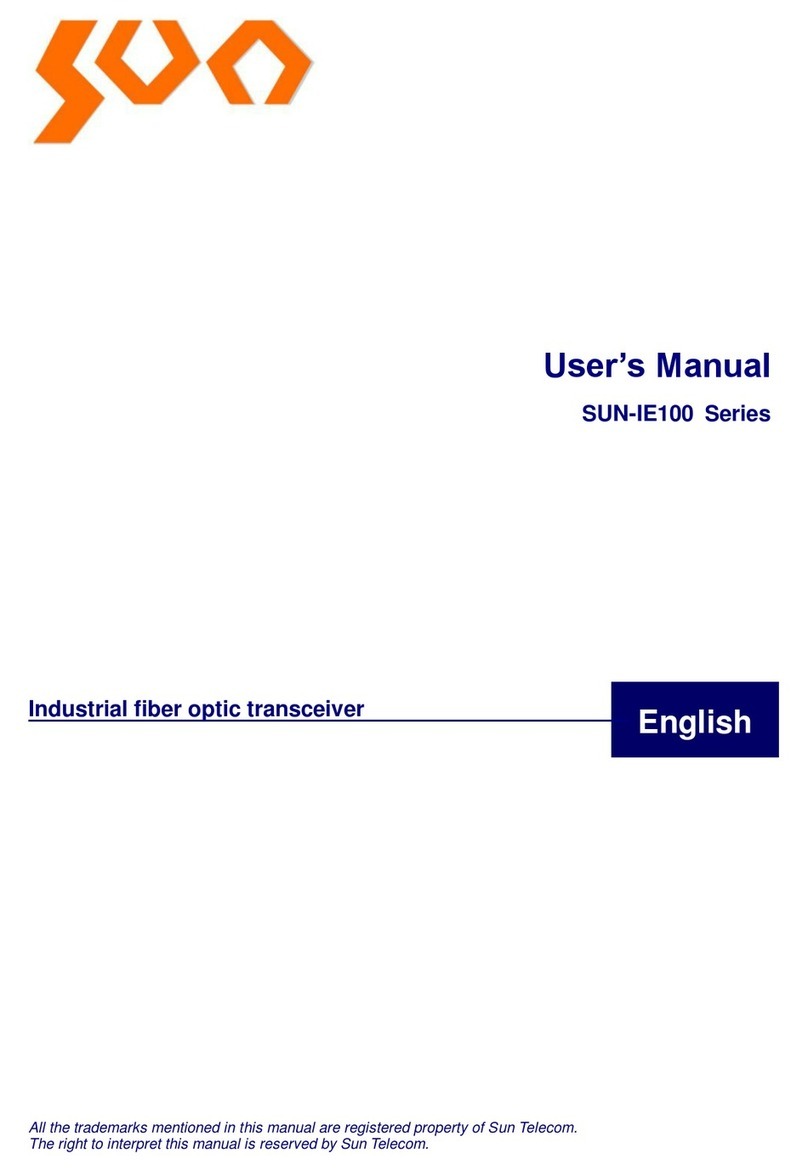
Sun Microsystems
Sun Microsystems SUN-IE100 Series user manual
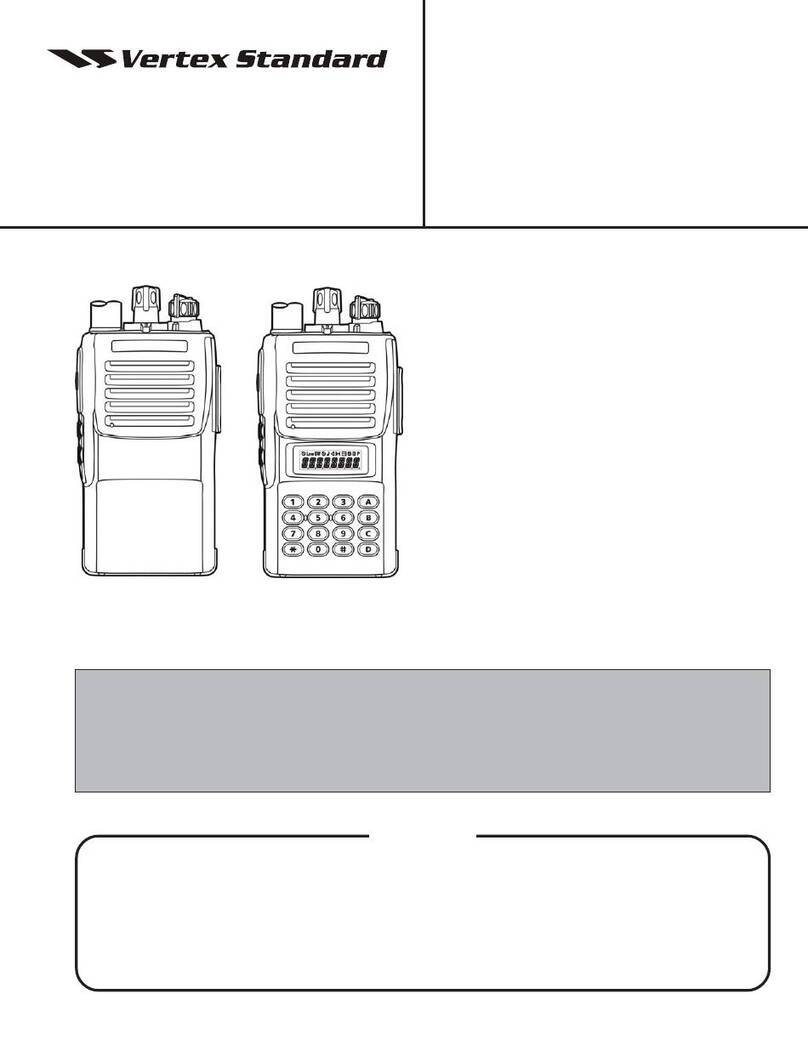
Vertex Standard
Vertex Standard VX-410 Series Service manual
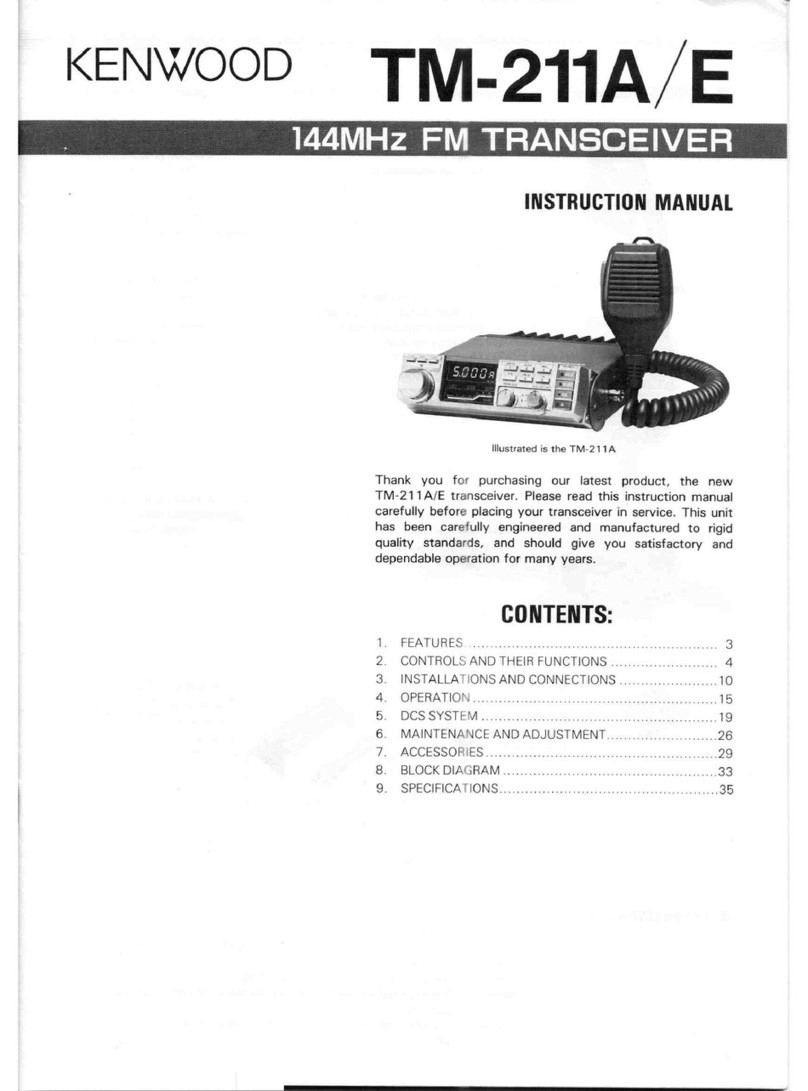
Kenwood
Kenwood TM-211A instruction manual

Kenwood
Kenwood TS-940S instruction manual
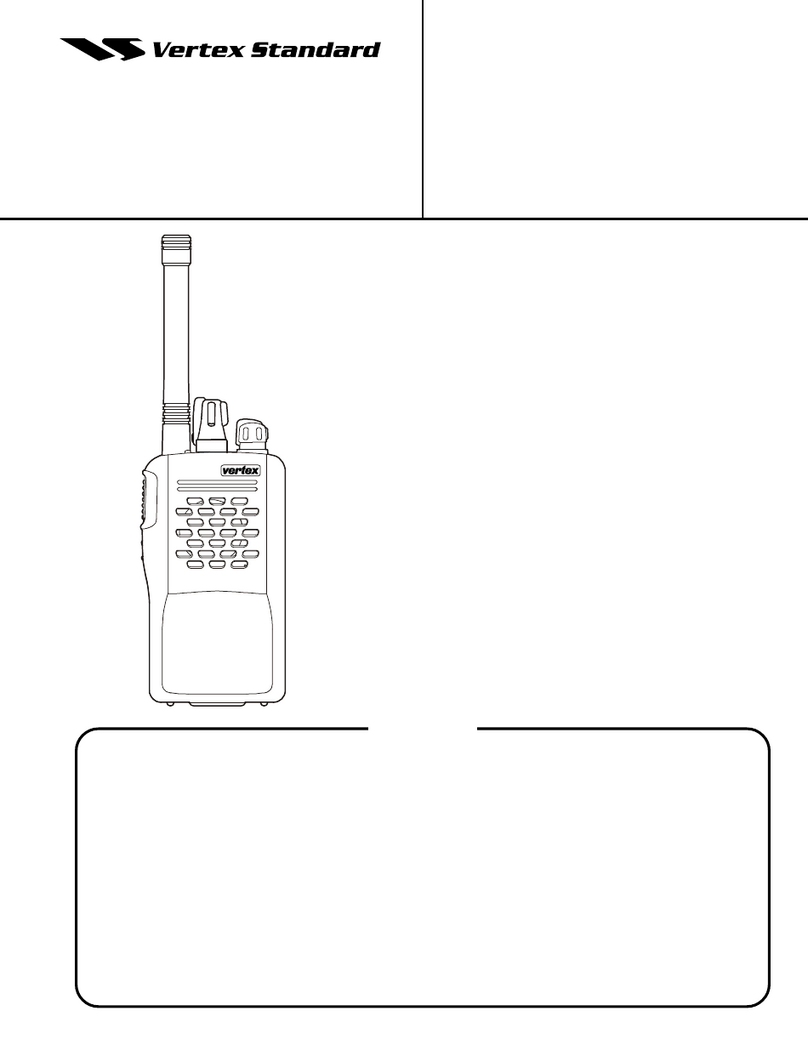
Vertex Standard
Vertex Standard VX-210AV Service manual
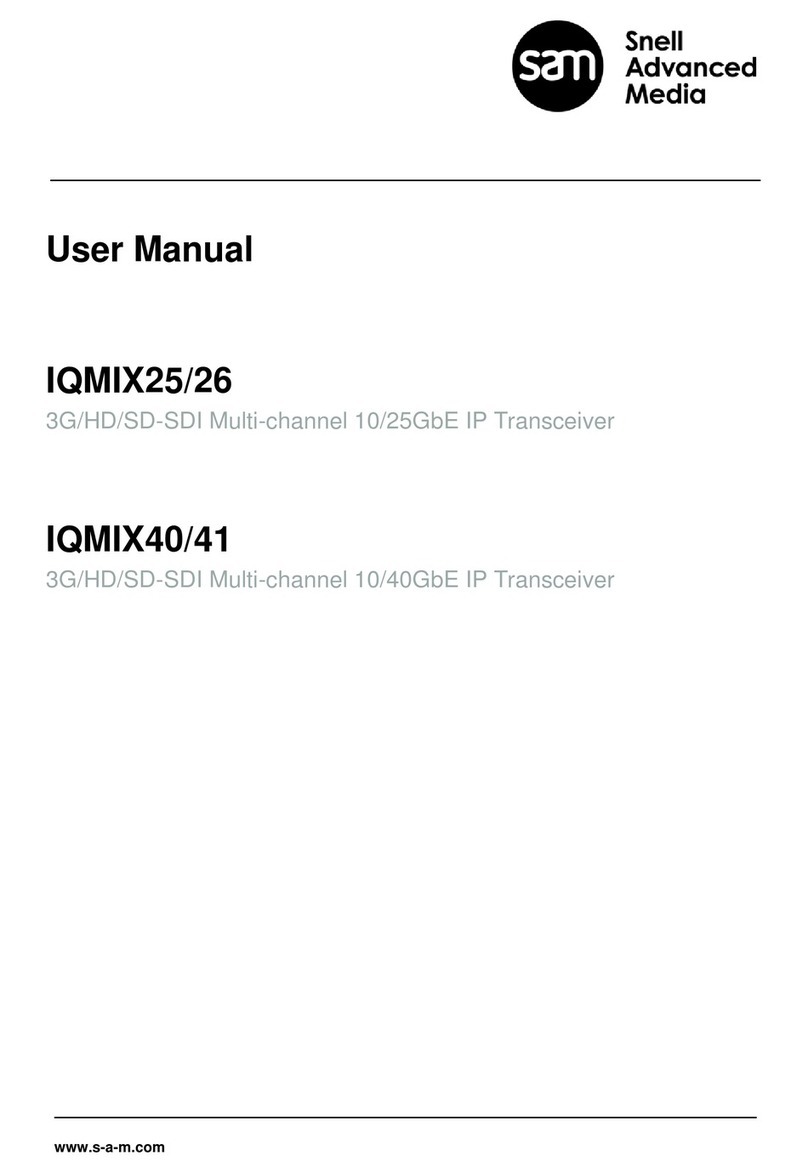
Snell Advanced Media
Snell Advanced Media IQMIX25 user manual
